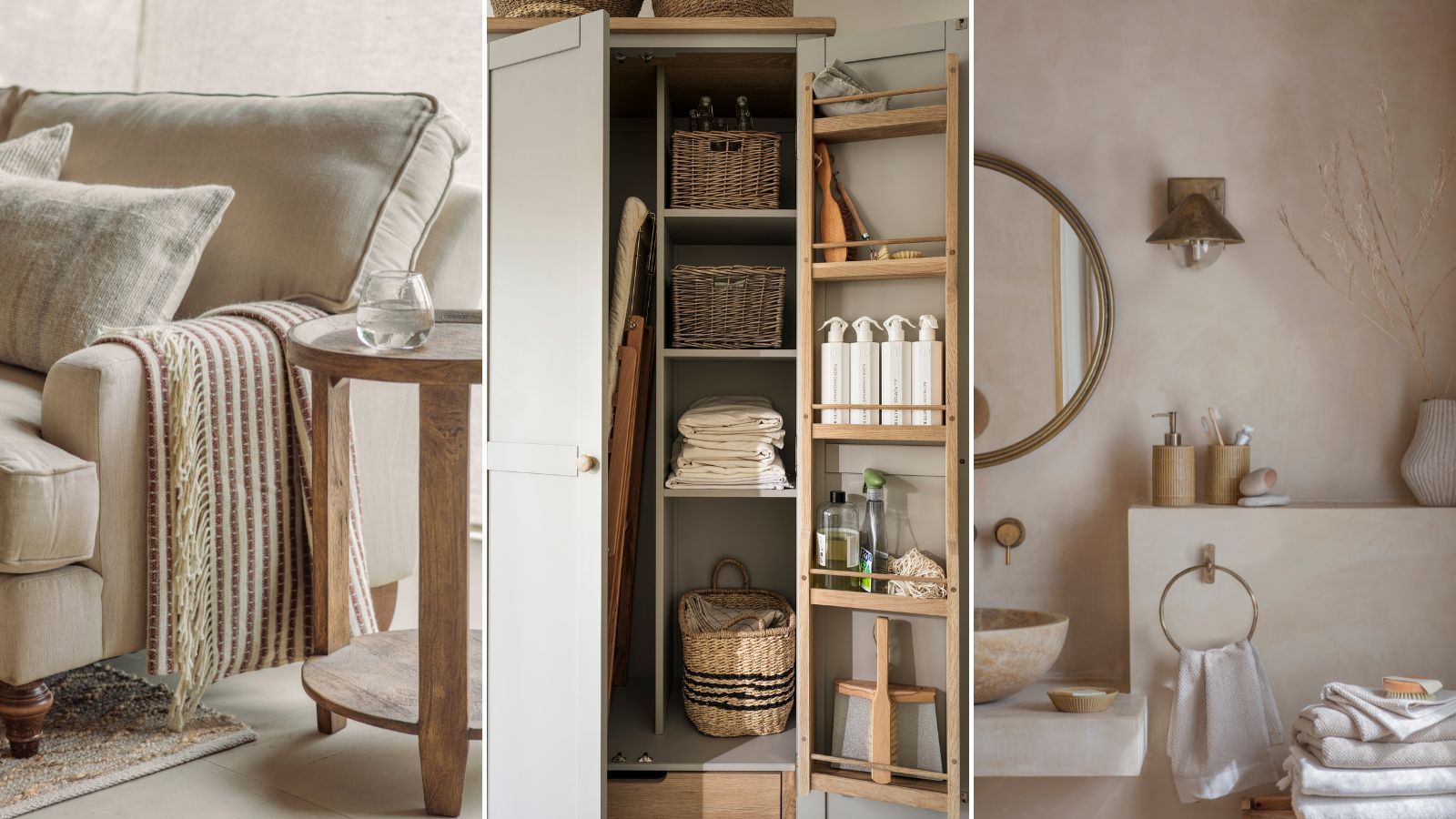
There are all sorts of methods and hacks for cleaning just about everything in your home – with some much more effective than others – so it can be hard to know exactly what is useful, and where to start.
From the kitchen to the bathroom, the living room to the bedroom, the jobs can seem endless, as can the list of cleaning products, for that matter. But you’ll be pleased to hear that you don’t need expensive tools, chemical-laden solutions, and complicated cleaning rules to achieve a sparkling finish.
With the help of those in the know, we’ve put together an expert-approved list of quick and easy cleaning tips, from hard-working fixes and green cleaning solutions, as well as some cleaning hacks to avoid, to ensure every inch of your home looks – and feels – spotlessly clean.
Household cleaning tips
Before you start cleaning any room, a good tidy-up is recommended. Begin by emptying bins, putting away laundry, clearing countertops and surfaces, tidying toys and generally organizing the space where necessary – our ultimate decluttering tips guide can help you. You’ll then be left with a much clearer idea of what needs to be done, and you can start to prioritize tasks.
1. Start with a plan – and write it down

Tackling a deep clean can be overwhelming, particularly if you’re working through every room in the house.
Andrea, founder of Pine & Prospect Home says, ‘I like to make a list of the things I’d like to accomplish and in what order, so they’re not all floating around in my head. It makes the whole process feel a lot more manageable, and you’re less likely to give up halfway through.'
There are several ways to make a to-do list less overwhelming, too, if you need an extra helping hand working out where to start.
2. Deal with dust (the right way)
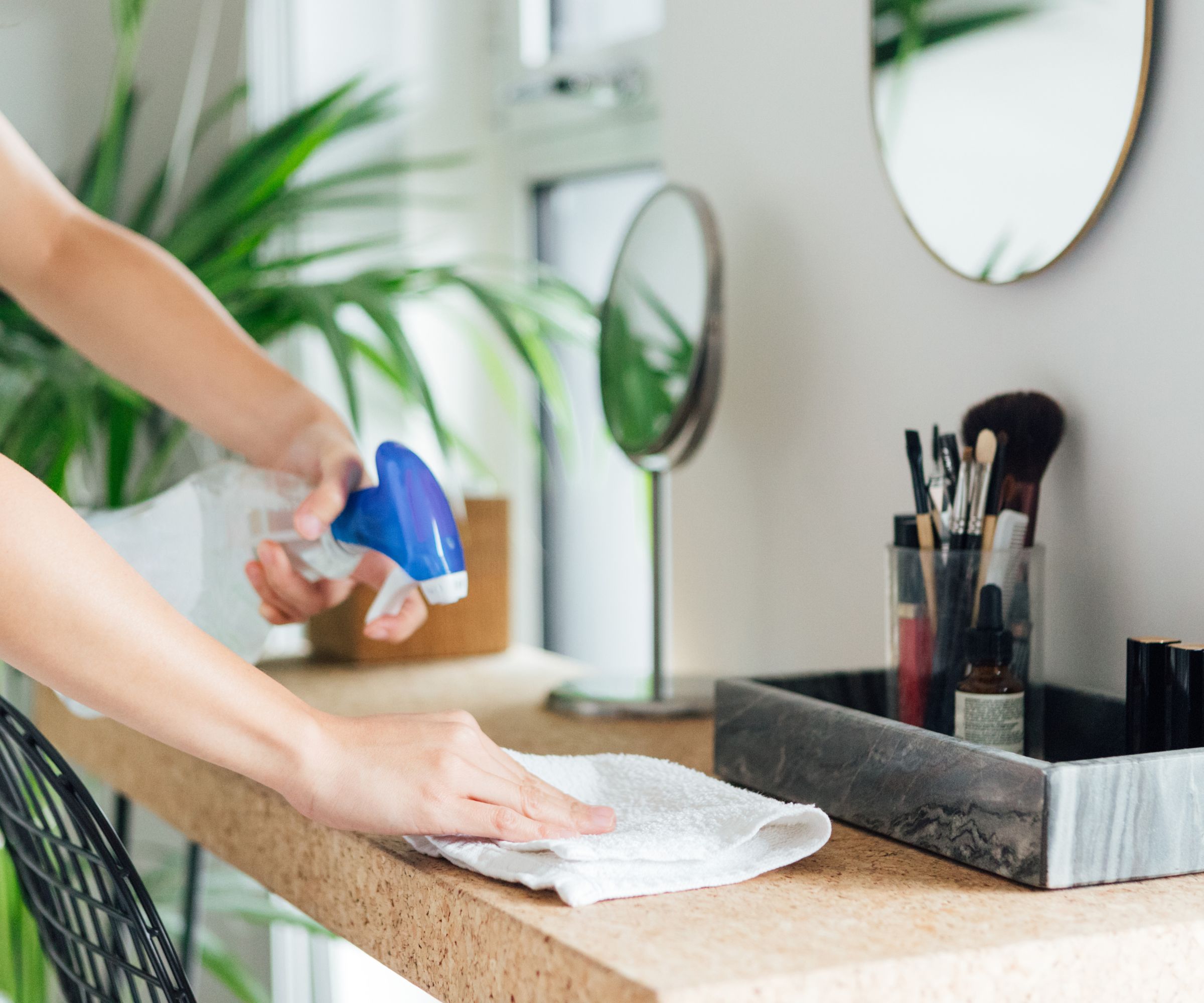
They may be fun to use, but fluffy dusters only spread dust, they don’t collect it. If you want to keep pesky particles at bay, opt for a damp microfiber cloth, at Amazon instead to help remove dust from your home.
Alternatively, we love the Scrub Daddy Damp Duster, for its ability to scoop up dust and remove it without spreading it around.
To help keep dust at bay, it can also help to invest in the best air purifier to collect dust from the air and stop it from settling in the first place.
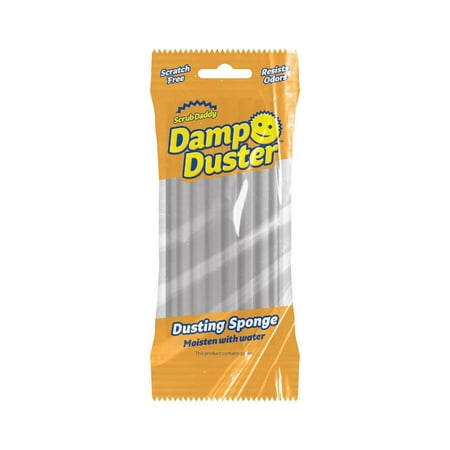
The Damp Duster is great for allergy sufferers as it removes all dust, pollen, pet hair, and more, affordable, reusable, and conveniently sized, and, better yet, is easy to clean – simply wash the sponge with water to remove dust and grime.
3. Work from top to bottom
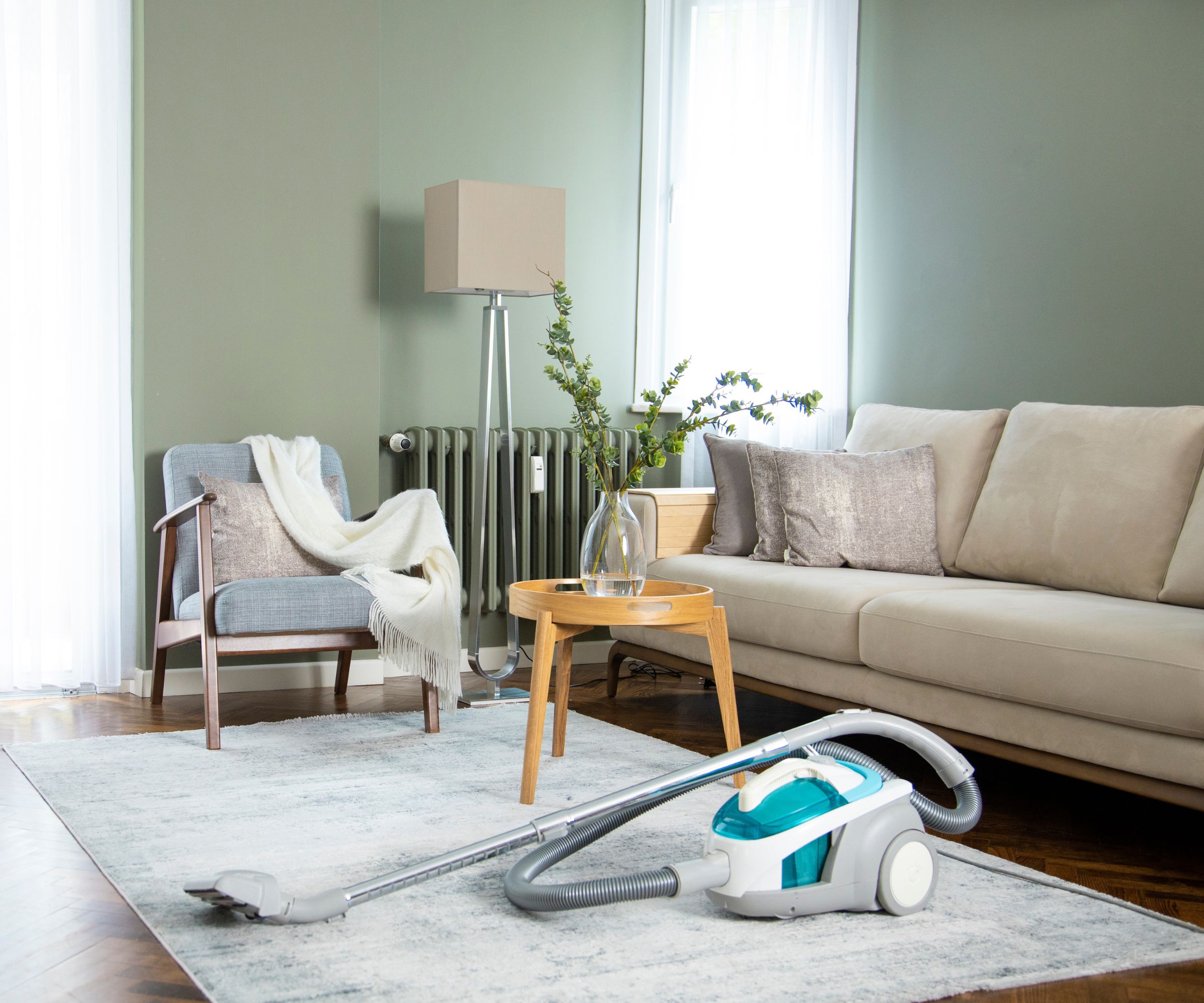
When cleaning any room in your home, my mom taught me that you should always work from top to bottom, starting at the highest points such as high shelves or the tops of cabinets, and working your way down towards the floor – finishing with vacuuming.
Working in this order not only ensures that you don't miss anything, as you are forced to work around the room systematically, but also prevents dust and grime from falling onto freshly cleaned surfaces. This way, you'll never have to go over the same area twice.
4. Show houseplants some love
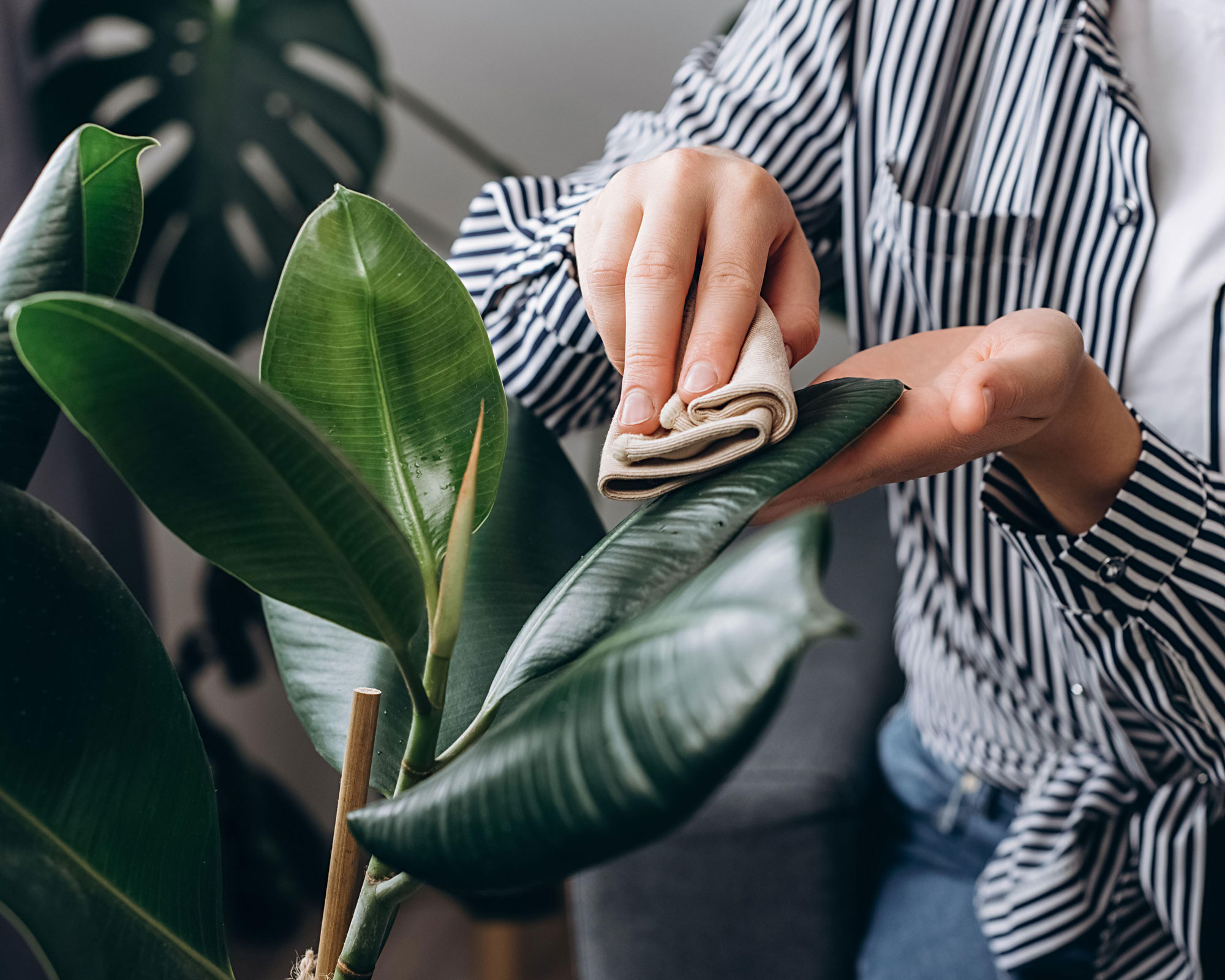
Houseplants can help to reduce dust in your home, but only by collecting it on their leaves, rather than having it spread around your space. So, like any other household item, they require regular cleaning to keep them dust-free.
Hardy houseplants can usually handle a rinse in the shower (as long as you stick to lukewarm water), but if their leaves are a little on the large side, the easiest way is to simply wipe them down with a damp microfiber cloth.
indoor plant specialist Mo Bhula of The Botanical Archive adds, ‘Don’t forget to wipe the undersides of your leaves too, you’ll be surprised how much dust you’ll find there. Maintain this method once a month to keep your plants looking fresh and healthy.'
For more delicate specimens, wrap paper towels around the container to stop the earth from falling out and gently dip them leaves-first into a bowl of water – easy.
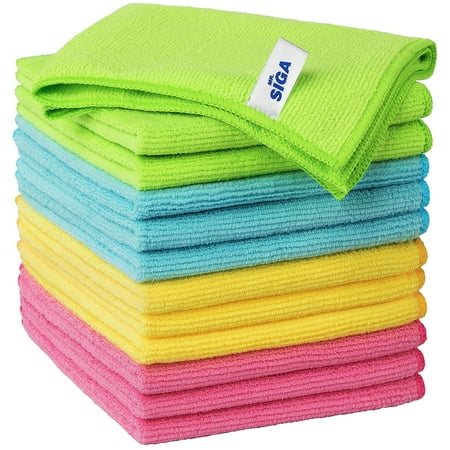
A stack of well-looked after microfiber cloths is essential for any home that wants to be spotless.
5. Set up a mobile stain station
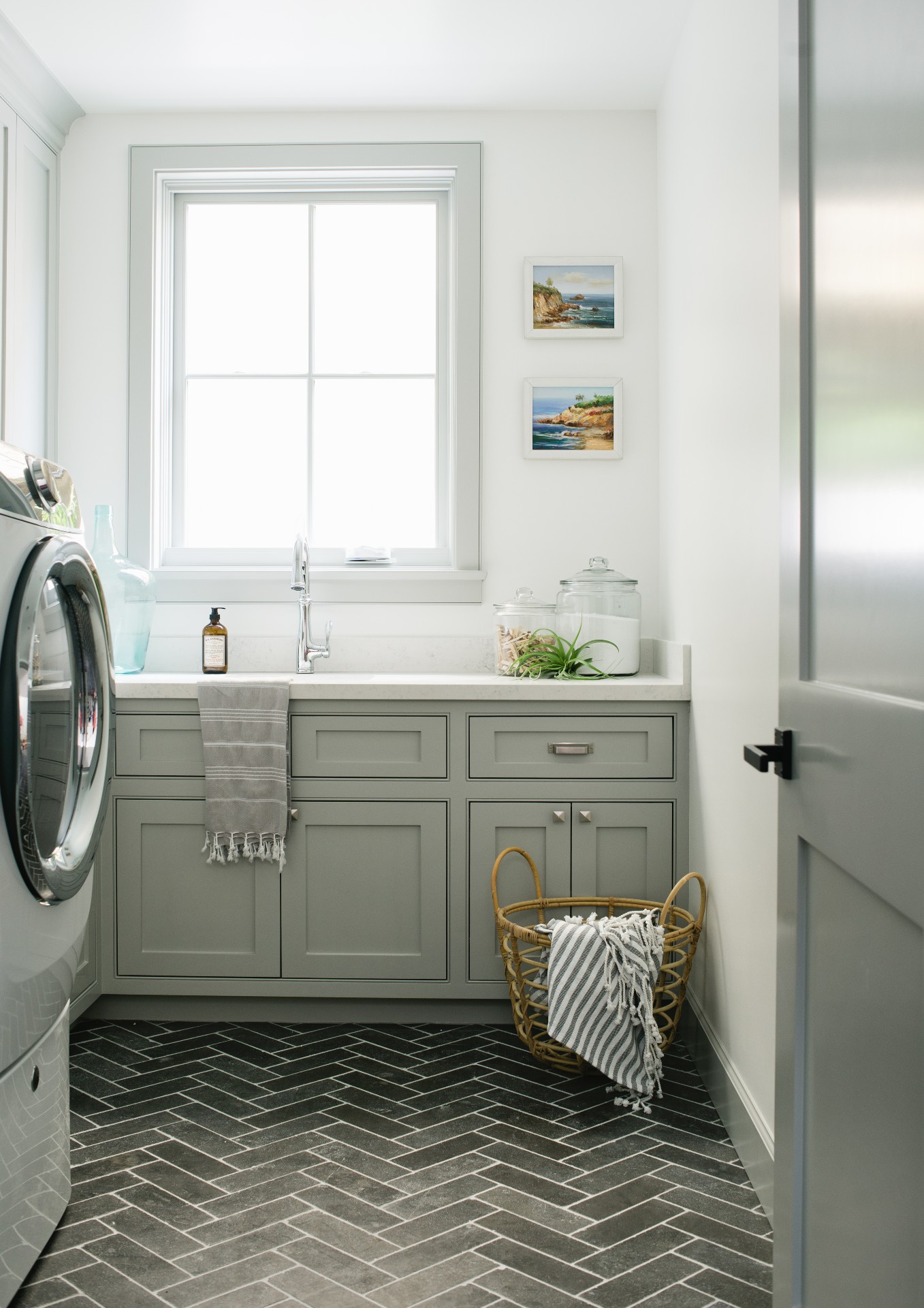
Experts always tell us to treat stains immediately to stop them from setting, so consider setting up a mobile stain station with detergent, stain removers, and clean cloths ready to use at a moment's notice.
When treating stains around the house, always remember to blot, never rub adds Vera Peterson, President of Molly Maid.
‘Whether it’s nail varnish, coffee, or a red wine stain, try and avoid panic-scrubbing, you’ll only push the stain deeper into the fibers. Instead, blot the stain gently with your remover of choice using a clean cloth – only ever use a white one to prevent any pigment bleeding into the carpet and making the stain worse.'
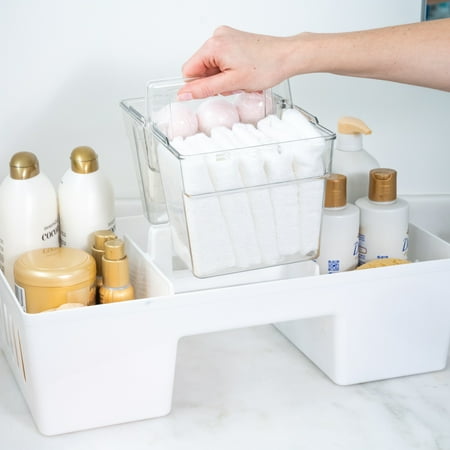
Designed to maximize under-cabinet storage, this large storage caddy comes with a removable inner caddy that can be removed and carried around for smaller tasks.
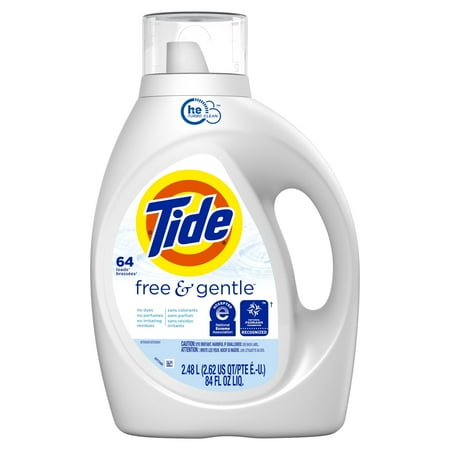
Perfect for use on delicate surfaces, or homes with people with allergies, Tide Free & Gentle is free from dyes and fragrances.
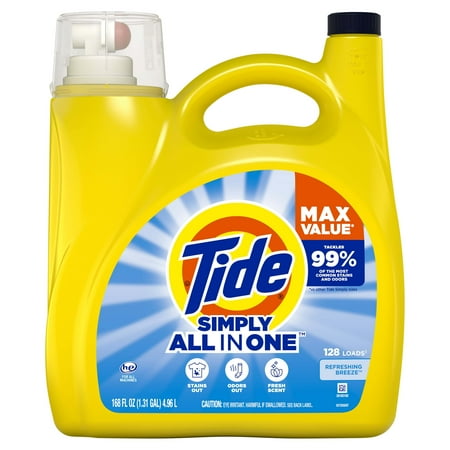
Tide detergent is designed to work effectively even at low washing temperatures to help you stay on top of stains while saving money on laundry.
6. Go natural where you can
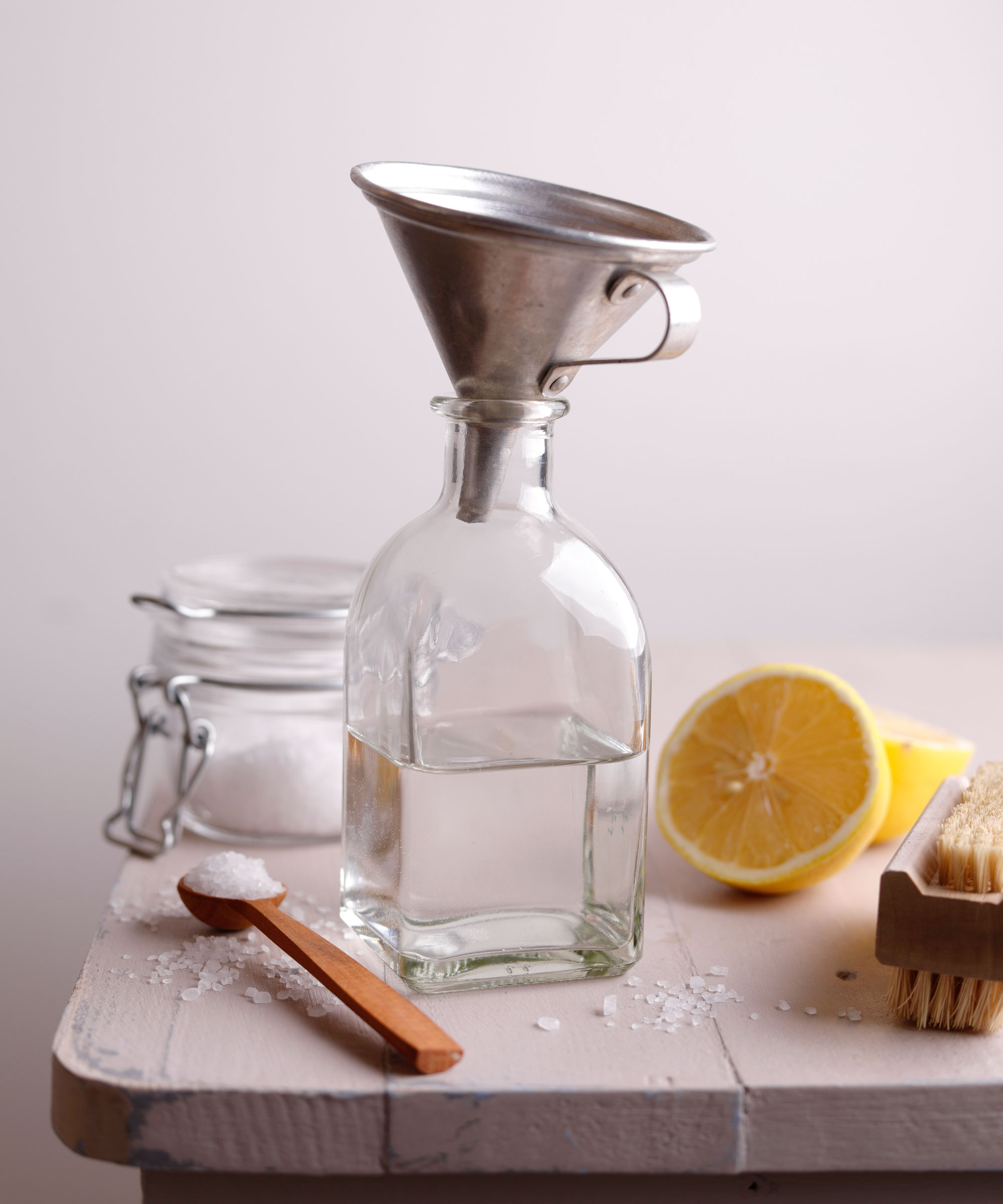
More often than not, you can get the same results with natural cleaners, opting to clean with vinegar, clean with baking soda, clean with lemon juice, or cleaning with hydrogen peroxide can work just as well as commercial cleaners but with a fraction of the health repercussions.
There are some instances where this might not apply, such as cleaning drains, but for the most part, green cleaning is a great way to save money at home and protect your health.
7. Harness the power of steam
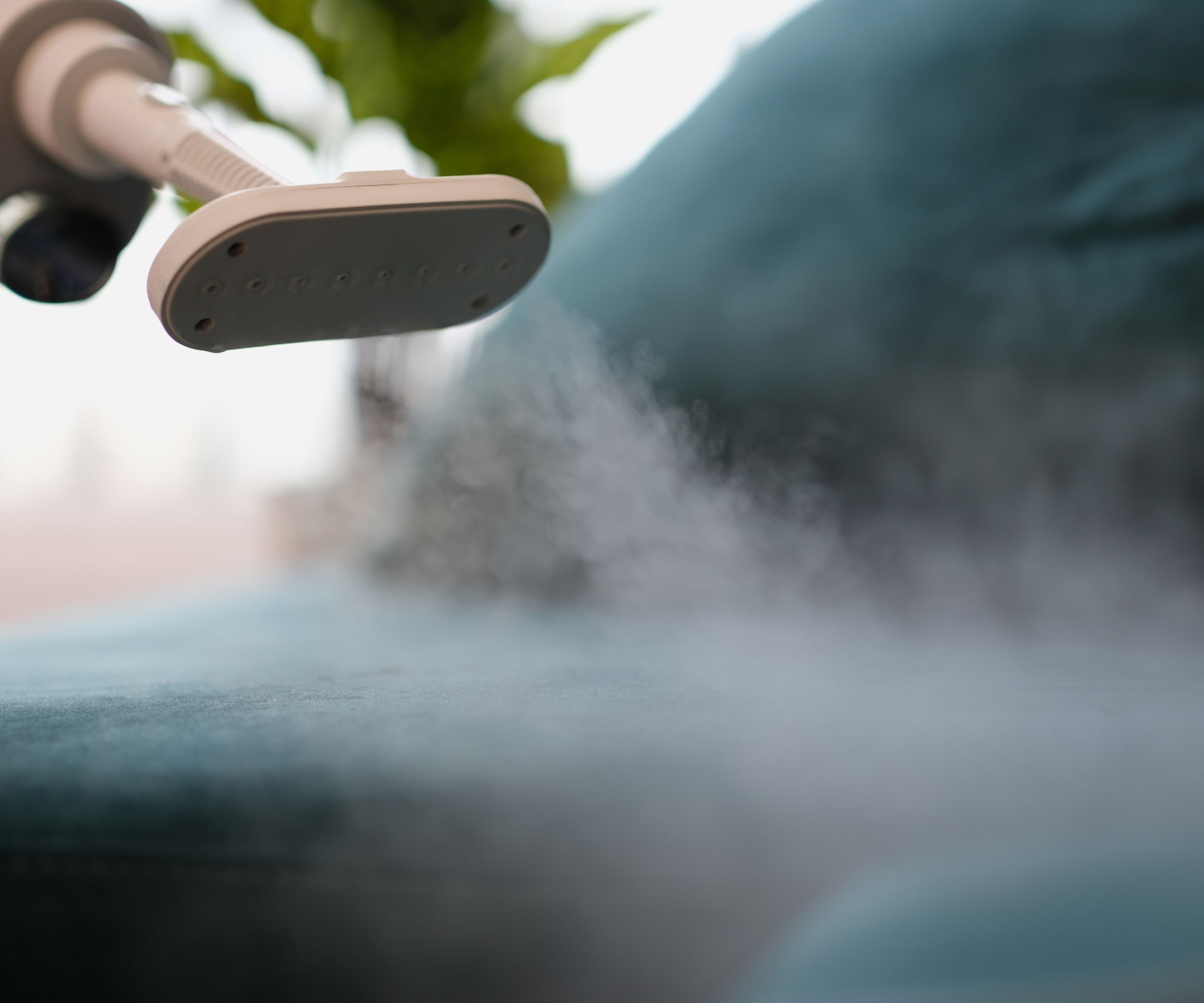
There are so many things you can clean with a steamer, and the best steam cleaners and mops usually fulfill multiple roles, from cleaning floors without streaks to cleaning upholstery and steaming clothes.
Steam is one of the best eco-friendly ways to clean your home, using high temperatures to melt grease, loosen stains, and kill bacteria without the need for chemicals that could damage your property or impact your health. Not to mention that high-pressure steam means you don't have to scrub anywhere near as much as you would with a cloth or brush.
Note that there are some things you should never steam clean in your home, however, before you accidentally melt something like your memory foam mattress.
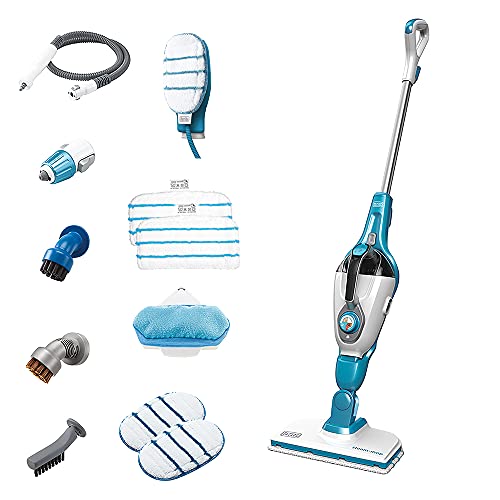
Rated H&G's best steam mop, the Black & Decker mop comes with attachments to clean hard floors and carpets, upholstery, glass, ovens, tiles and grout, and clothing.
8. Clean as you go

Angela Lee, cleaning expert at HellaMaid. recommends, 'Make daily cleaning a habit by wiping down surfaces and putting items away as soon as you use them. This will prevent mess from building up and make cleaning faster and easier going forward.'
This will help make it easier to prep your home when guests are due. Learn more about the dirty things professional cleaners spot in people's homes, dining rooms, and kitchens.
9. Don't forget woodwork

Save yourself both time and effort scrubbing scuffs and stains of doors, baseboards, and woodwork in general by investing in a Magic Eraser, available at Walmart. They don’t call it magic for nothing, it makes light work of fingerprints, pen marks, paw prints, and more.
This humble white sponge can also be used for cleaning walls, but be aware that they do have a tendency to leave faint marks behind on certain paint finishes, particularly matt ones, so test in an inconspicuous spot first to be on the safe side.
10. Look up to lights and ceiling fans

Turning on your lights or ceiling fan only to see specks of dust flying through the air is no good for anyone, particularly if you suffer from allergies. ‘A great ceiling fan cleaning trick is to simply place a pillowcase over each blade, pulling it tight, so there’s no gaps. Gently pull the pillowcase towards you to contain the dust neatly in the case,' says cleaning pro Beth McCallum, contributor for Oh So Sportless.
When cleaning lampshades, use a lint roller to collect dust, or alternatively run them over with the brush attachment of a vacuum cleaner. Metal lighting ideas benefit from a quick wipe-down with a damp microfiber cloth.
11. Deodorize your washing machine
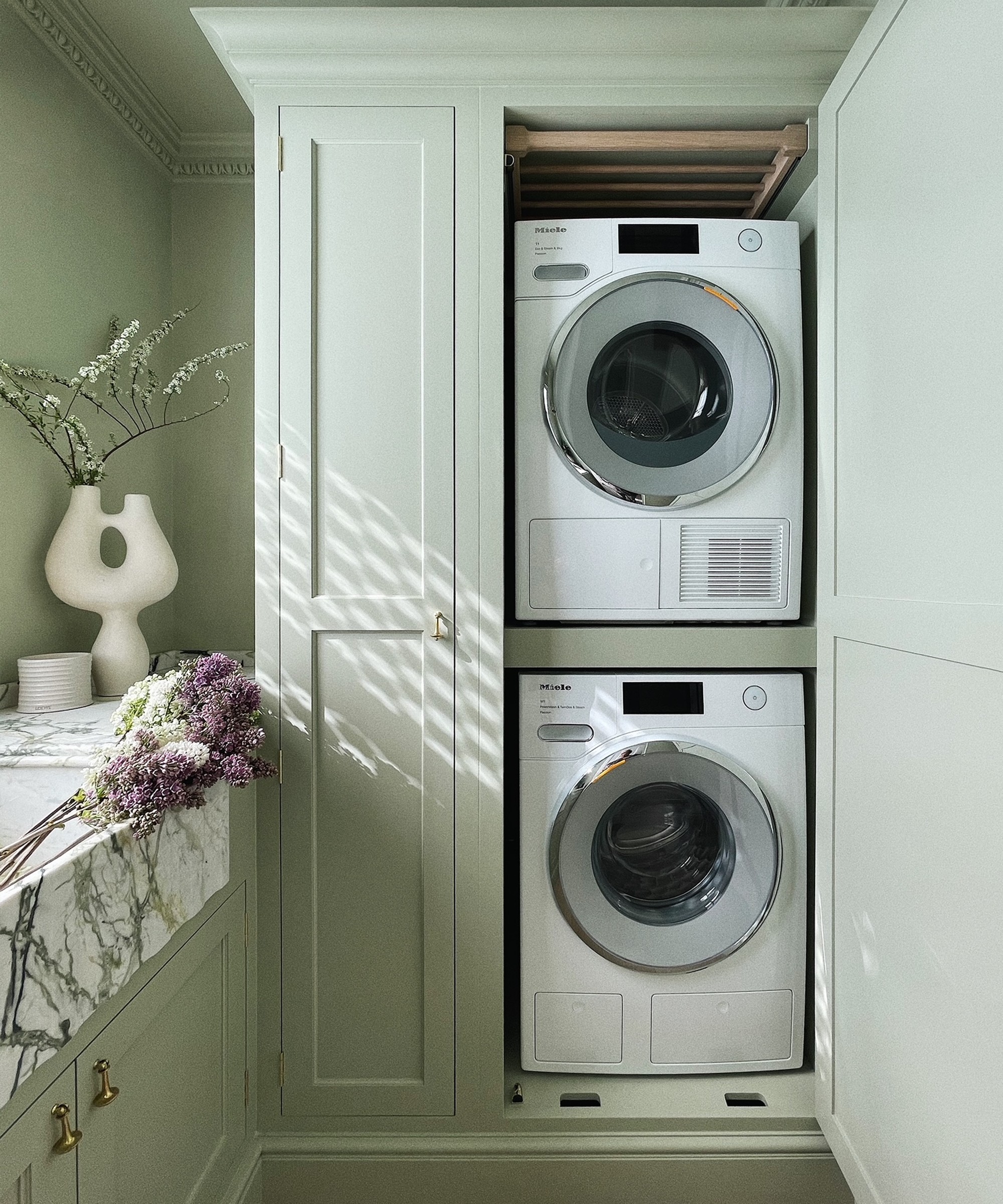
There is no point putting linens and clothing in a dirty washing machine especially if your goal is to make a home smell nice. It is a good rule of thumb to clean your washing machine at least once per month, warns Laurel Hess, laundry care expert at hampr:
'To prevent product buildup and odors, it's recommended to run a cleaning cycle every 30 cycles or about once a month,' she advises. 'Neglecting to clean your washing machine can lead to unpleasant odors and the growth of bacteria. But don't worry, we have a solution! Our go-to cleaning agent is Affresh, available at Walmart.
'Simply toss one of the tablets into your washing machine drum and start a self-clean cycle. If your machine doesn't have a self-clean option, just choose a heavy cycle with hot water. These convenient tablets effectively clean the drum and inner workings of your machine, leaving it fresh and clean for many more loads to come.'
12. Buff steaks from screens

When cleaning a living room, tackling the tv screen regularly (at least once a week ideally) is a must, but knowing how to clean a tv screen the right way is essential if you want to avoid any damage. The main thing to remember is to avoid liquids at all costs. While a microfiber cloth works well, you can also use a tumble dryer sheet; they’re anti-static, so you won’t have to dust so often, either – bonus!
13. Use the right tools for pet hair

If your home plays host to a furry friend or two, you’ll want to keep stray hairs at bay; if not every day, at least before guests come over. Use a lint roller like this one from Walmart on soft furnishings and lampshades. For more routine cleaning, run a damp rubber squeegee or rubber gloves over carpets before vacuuming with the best vacuum for pet hair.
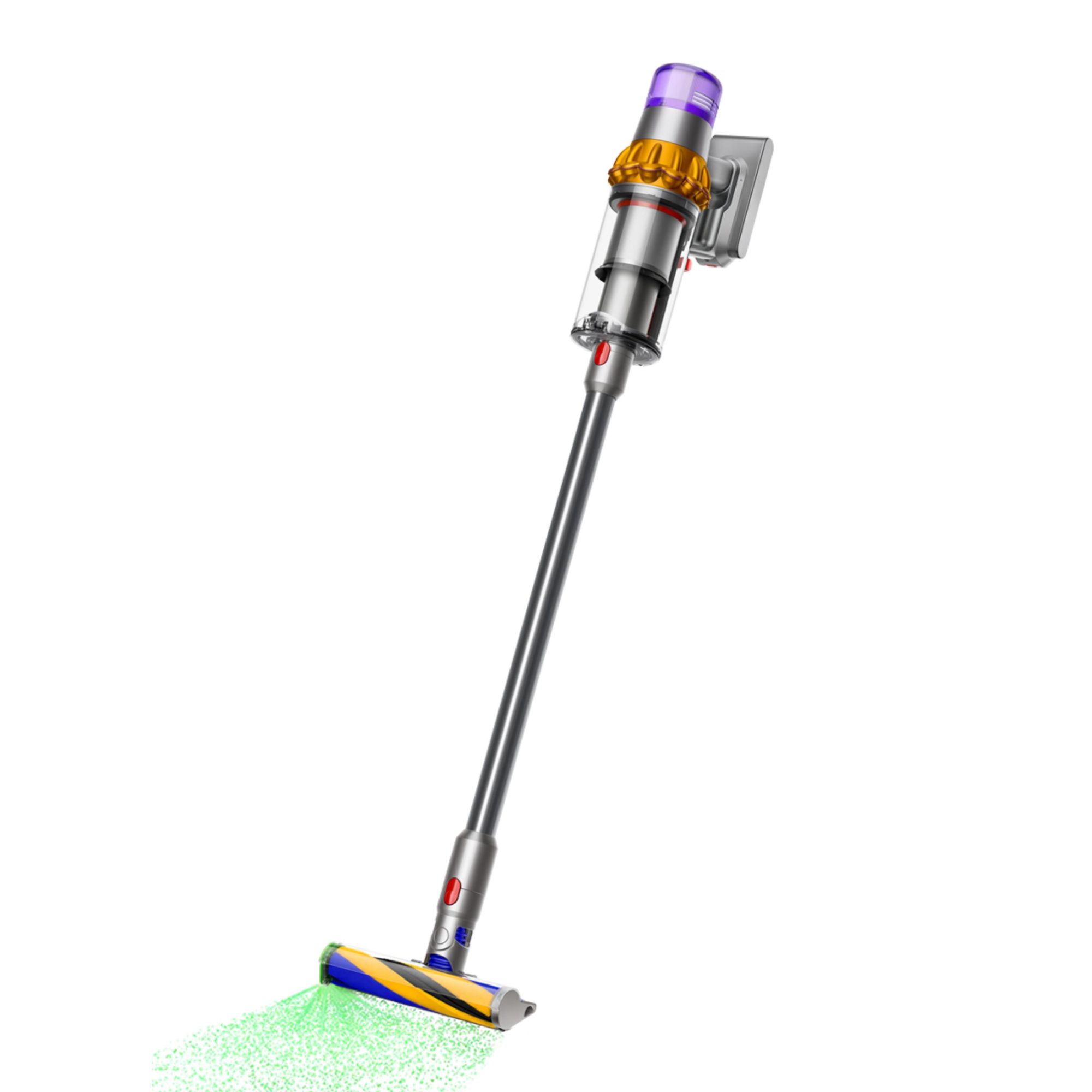
This is the best vacuum you can buy, and it's amazing with pet hair.
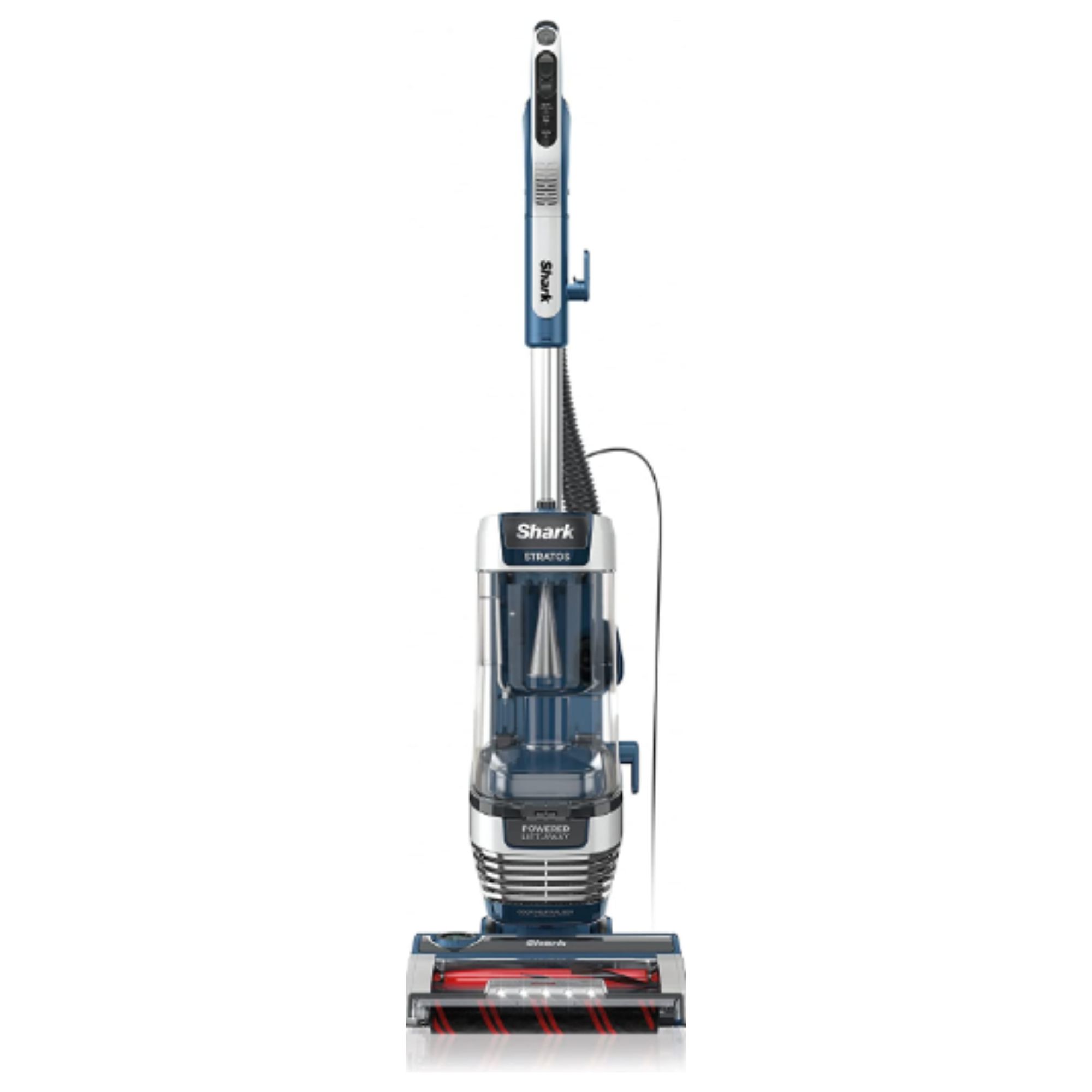
Effective pet hair removal at a fair price. This nimble upright also has odor-neutralising tech that removes pet smells.
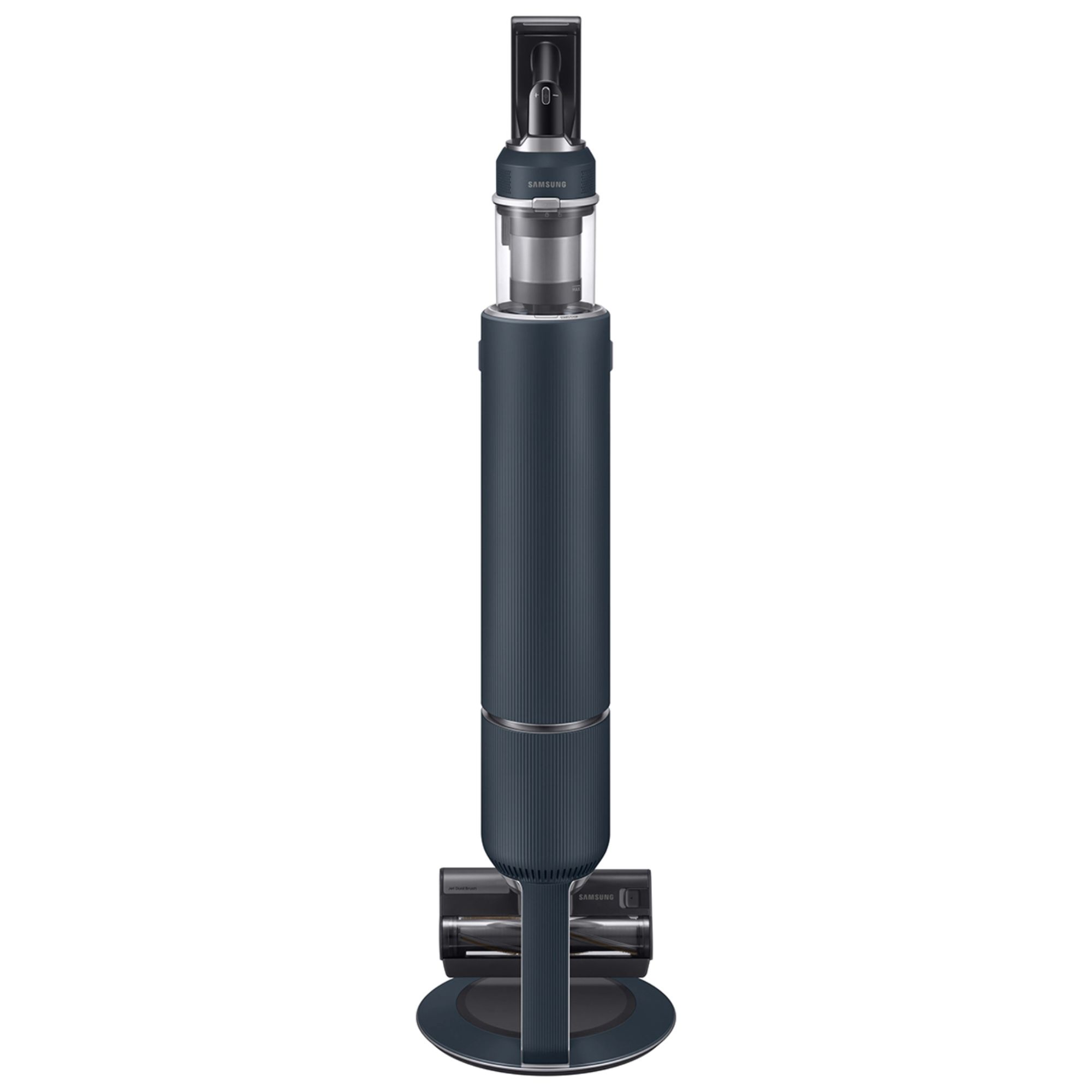
Samsung's Bespoke Jet combines HEPA filtration and a unique bagged base to protect you from fur and allergies
14. Clean your cleaning tools
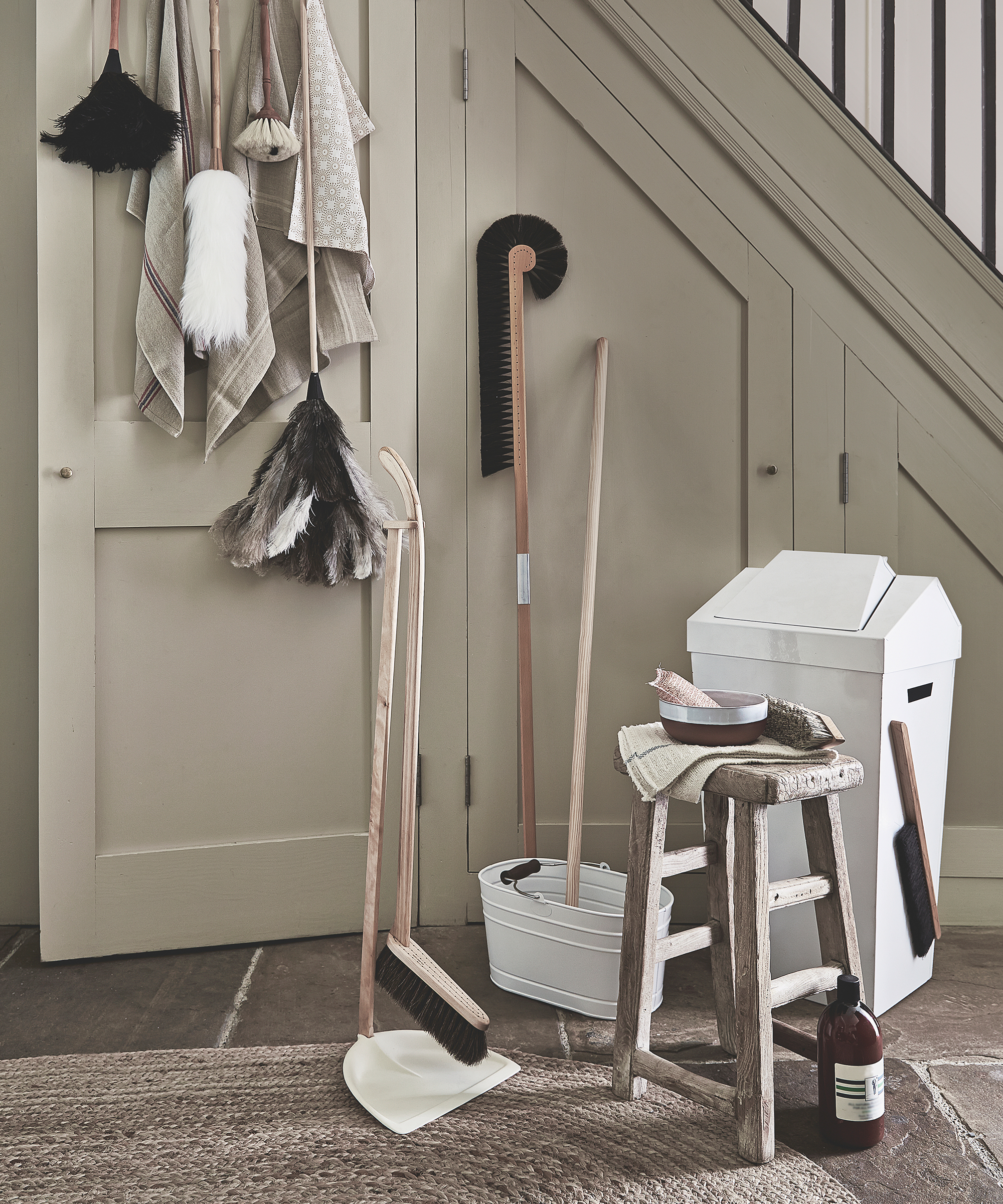
Keeping your cleaning supplies clean is just as important as cleaning your house. Without clean, well-maintained tools, your home will only get dirtier, but your hard work to waste.
From cleaning a vacuum to washing microfiber cloths correctly, it all makes a difference in how much dirt is removed from your space.
How you organize cleaning supplies and store cleaning supplies for maximum efficiency will also affect how long your essential cleaning tools last before needing replacements.
15. Automate tasks
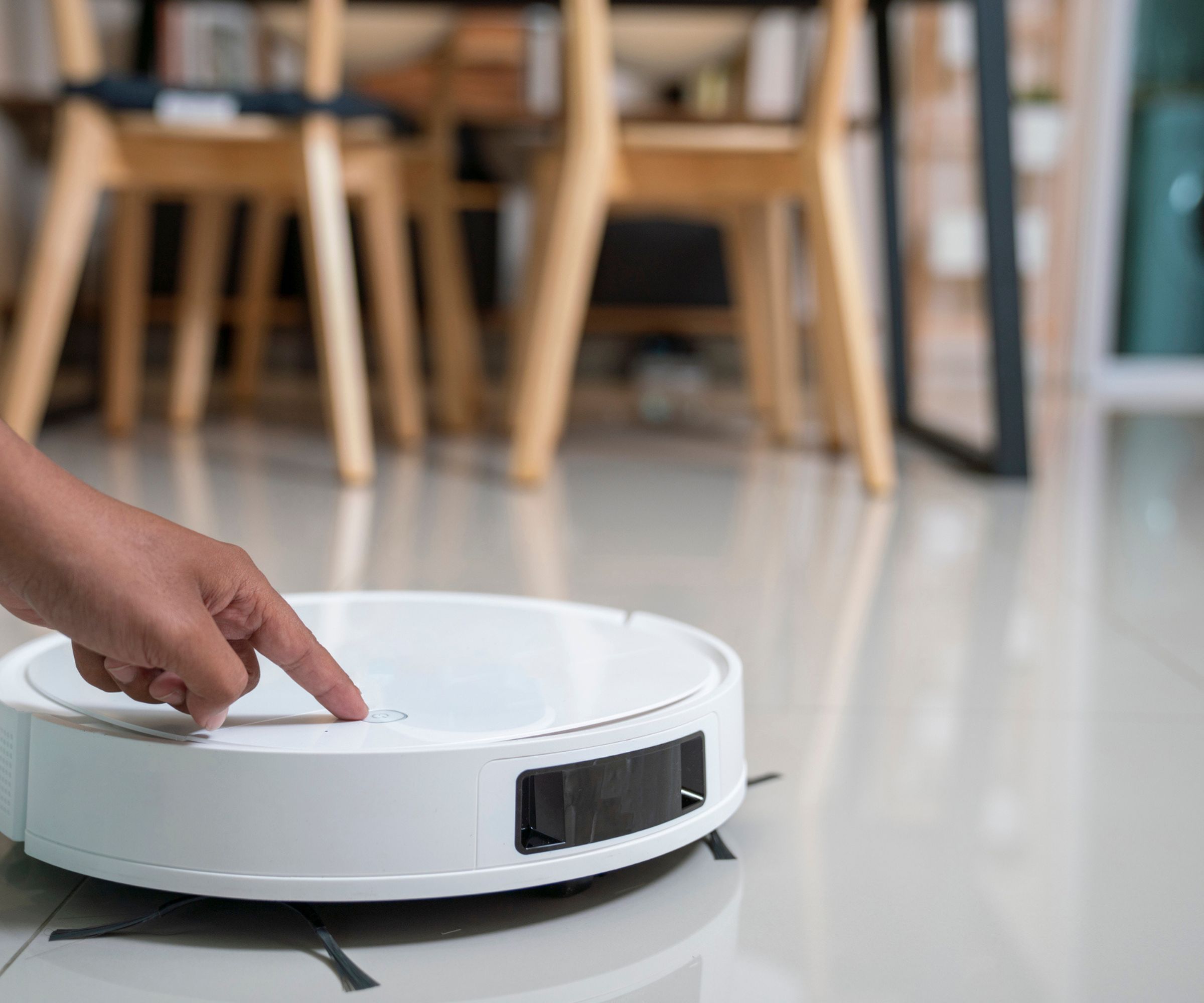
One of the best smart habits to spend less time cleaning is investing in smart home cleaning tools that will automate your cleaning and allow you to spend more time relaxing.
The most obvious for this is to invest in the best robot vacuum, ticking one task off your to-do list right off the bat.
Automating your tasks is also one of our best cleaning tips for anyone living alone so you aren't swamped with chores.
Kitchen cleaning tips
16. Start with naturally degreasing
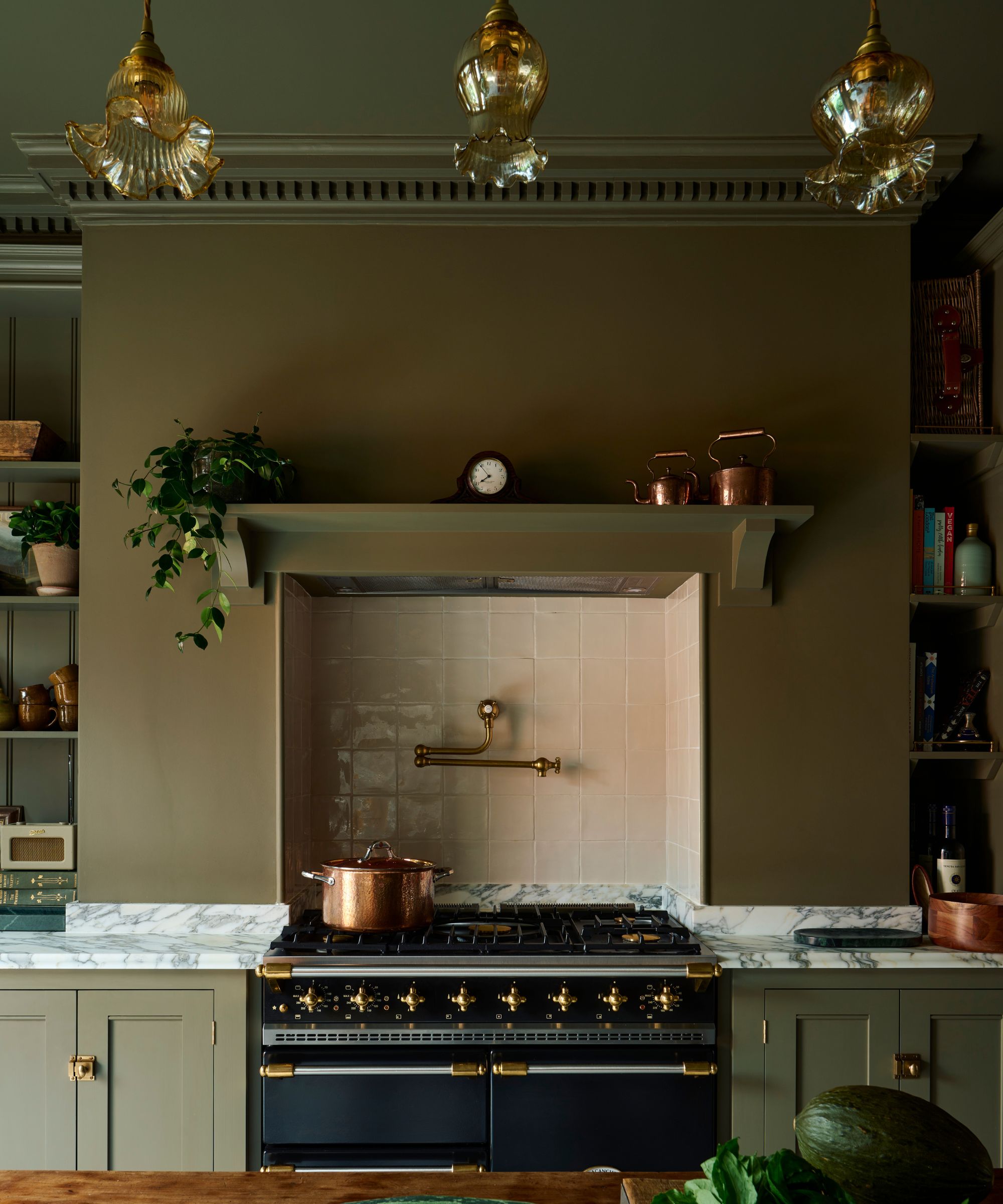
You may think you know how to clean an oven already, but this easy trick for cleaning with lemon juice might just revolutionize your method.
Place a slice of fresh lemon into one and a half cups of water in an oven-proof bowl, then place into a 250-degree oven for 20 minutes. Turn the heat off and let the water cool slightly before wiping the floor, walls and racks with a cloth or sponge dipped in the hot lemon water until they shine.
This ‘steam-cleaning’ method can be used to clean a microwave, too. Place half a lemon cut side down on a microwaveable plate with a little water, and heat on high for about 30 seconds (or until it produces steam). Leave to stand for a few minutes, then use a damp cloth to wipe down the walls.
For tougher, baked-on greasy areas in either appliance, try rubbing in some baking soda with half a lemon (squeezing it as you go so the juice mixes in to form a paste), or try bleach-free Barkeepers Friend cleanser, at Walmart.
‘To lessen your workload in the future, consider lining the bottom of your oven with aluminum foil, then place a baking sheet on top. This will catch any spills or drips so you don’t waste time scrubbing baked-on food. Replace the foil when it gets dirty,' advises Angela Lee, cleaning expert
17. Leave your sink spotless
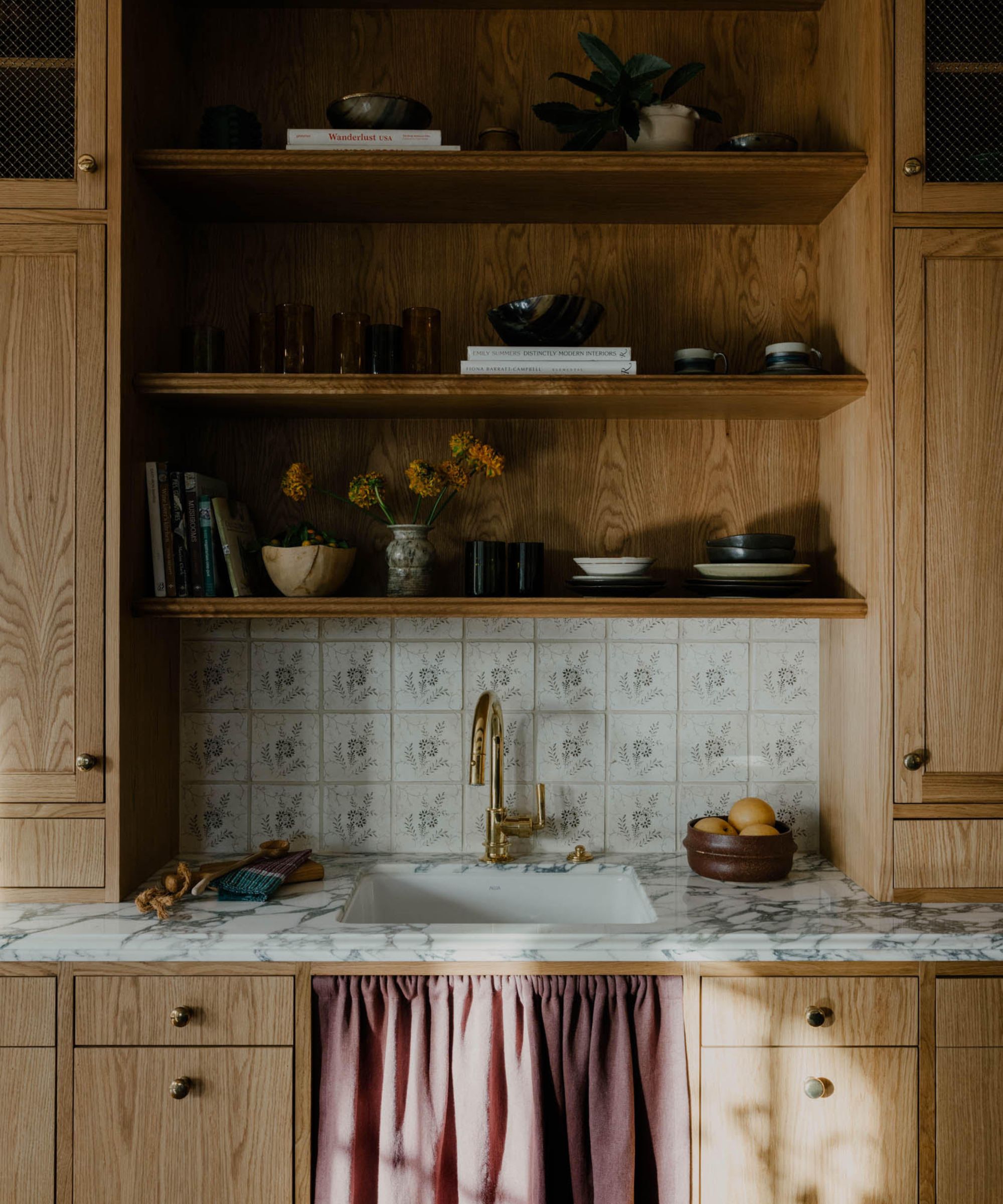
Even if the rest of the room isn’t quite up to scratch, a sparkling sink will give the impression it is. How you clean a kitchen sink (or a bathroom sink, for that matter) will depend on what it’s made of, but if you’re looking for a quick fix, a mixture of mild washing up liquid and warm water is generally safe to use. If you’ve got chrome taps, try rubbing with a little whitening toothpaste squeezed onto a dry cloth to restore their original shine.
To get rid of any drainy smells emanating from the plughole, tip half a cup of bicarbonate of soda and half a cup of vinegar down and rinse with hot water from the kettle.
18. Keep cutting boards hygienic
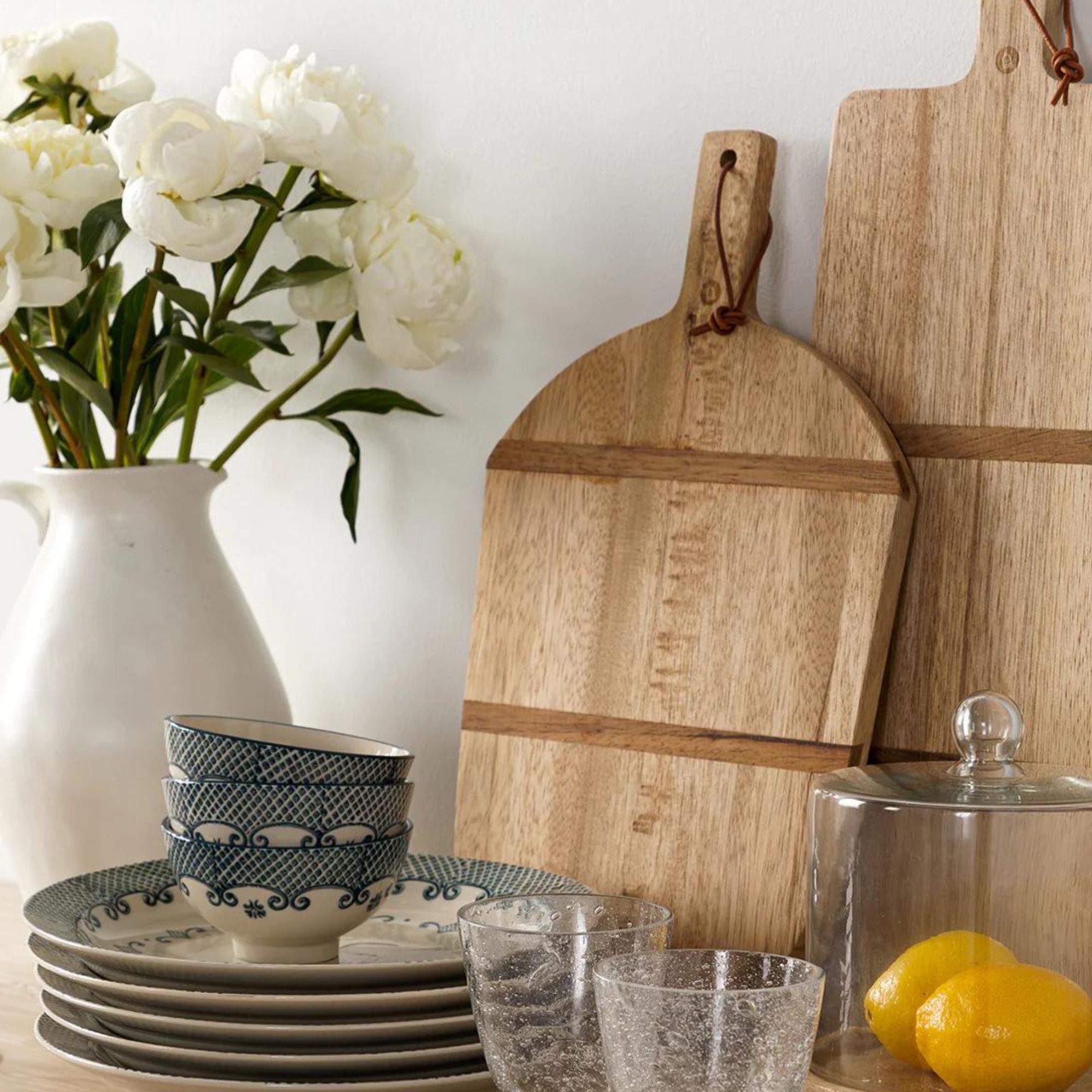
Caring for wooden cutting boards is a full-time job if you want to mitigate the risk of cross-contamination, but it can be made easier by cleaning with lemon juice, assures Gabriella Dyson, Solved section editor.
'Did you know that rubbing half a lemon over your chopping boards is one of the best ways to get rid of lingering onion smells? Sprinkle the surface with grainy rock salt beforehand to help shift any stains, then give the surface a good scrub with a natural brush before rinsing.'
19. Don't forget to descale

After that perfect brew? Be sure to clean your coffee maker regularly with… denture cleaning tablets. Yes really. Containing many of the same ingredients as basic household cleaners, they dissolve into water, making them an expert-approved hack for appliances with hard-to-reach crevices. Simply fill the reservoir with water, drop in a tab or two and run a cycle. Discard the water and run through again to rinse away any loose limescale.
20. Remember vertical surfaces

They may look clean enough, but the doors and handles of your kitchen cabinets are one of the most high-frequency touch points in our homes, making them a hotbed for germs. That's far from ideal in a room made for cooking.
A quick wipe-down with a microfiber cloth and some warm water is all it takes to remove sticky marks on a daily basis and stop unhygienic grime from building up over time. If the door is greasy, you can always add in a small amount of washing-up liquid – just be sure to wipe off the residue afterward to avoid a smeary finish.
It doesn’t need to be part of your regular cleaning routine – once or twice a year is fine – but don't forget to clean the tops and the inside of your cabinets, too. Vacuum up loose dirt and debris first using the brush attachment, then employ the same method as above.
21. Deep clean the dishwasher
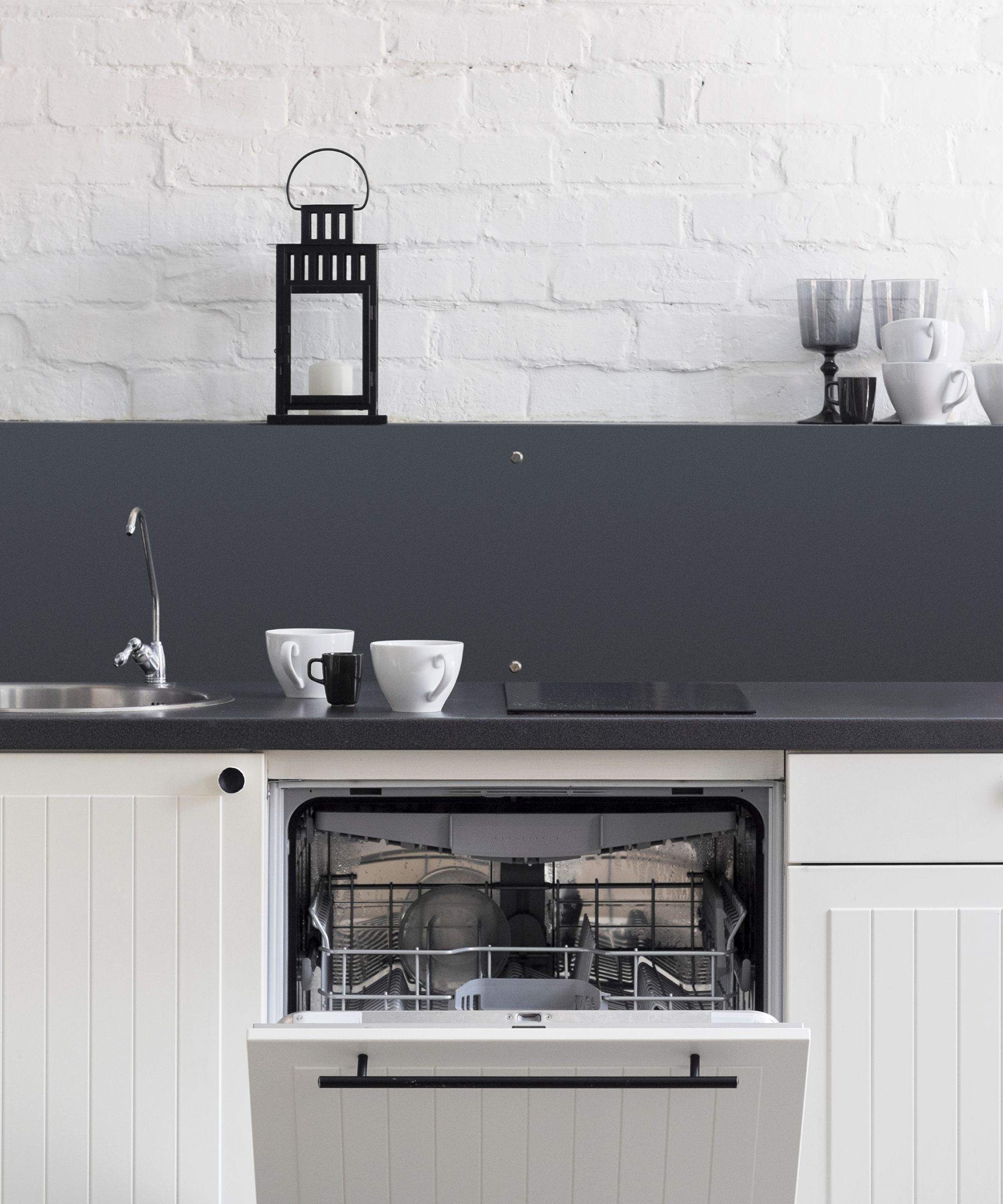
Cleaning a dishwasher is not something you need to worry about day-to-day, but a monthly MOT is a good idea if you want to avoid food debris and soap residue from building up – it’ll last longer, too.
Start by running an empty hot-wash cycle. Remove any baskets and/or trays and soak in hot, soapy water. Using a toothpick, clear debris from the filter (and the water holes on the spinning arms whilst you’re at it), soak it in soapy water and rinse clean.
Pull out the bottom drawer so you can get to the drain, and give it a good scrub with a toothbrush and a multipurpose cleaner. Wipe down the door with a cloth, not forgetting the rubber gasket around the sides, and run a short cycle to finish the job. Done!
22. Deodorize your fridge and pantry

Even if you always store food correctly in your refrigerator and when organizing a pantry, they will still get dirty. Not only does this make your kitchen smell musty, but can attract pests and make food turn bad more quickly too.
When cleaning a fridge or pantry, empty everything out first, disposing of anything that has expired or you know you will not use before wiping down the shelves with an anti-bacterial spray. Wipe to dry and restock with the tallest and freshest items at the back, and the smallest items with those you need to use up soonest at the front.
23. Treat your trashcan
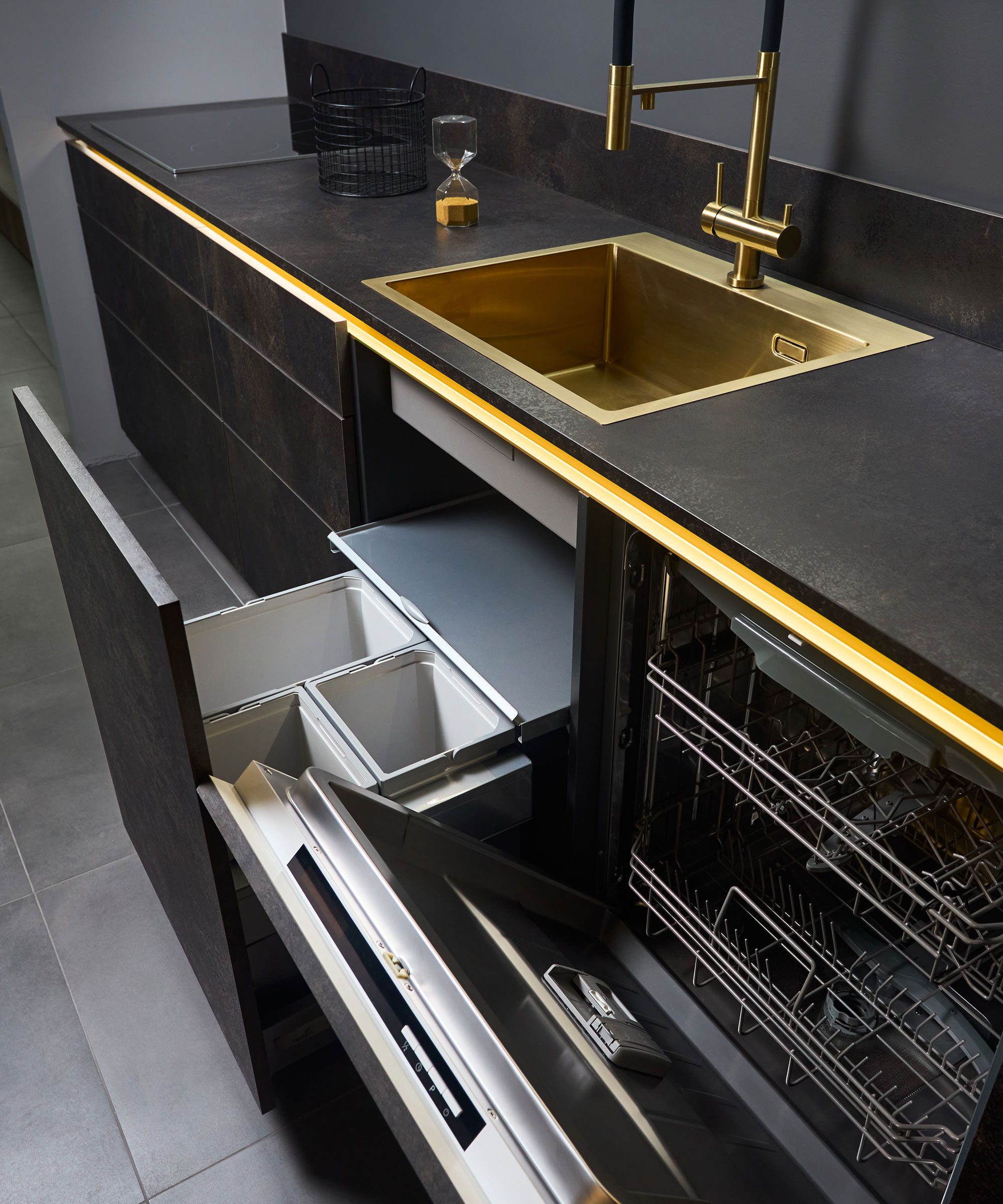
The easiest way to banish bad kitchen smells is to clean a trash can every time you empty it. Wiping it down with a nicely scented anti-bacterial spry, or killing mold with vinegar will instantly make your home smell nicer,
Toss in a cotton ball scented with essential oils, or conceal a trash can in a cabinet for added odor protection.
Bedroom cleaning tips
24. Switch out sheets regularly
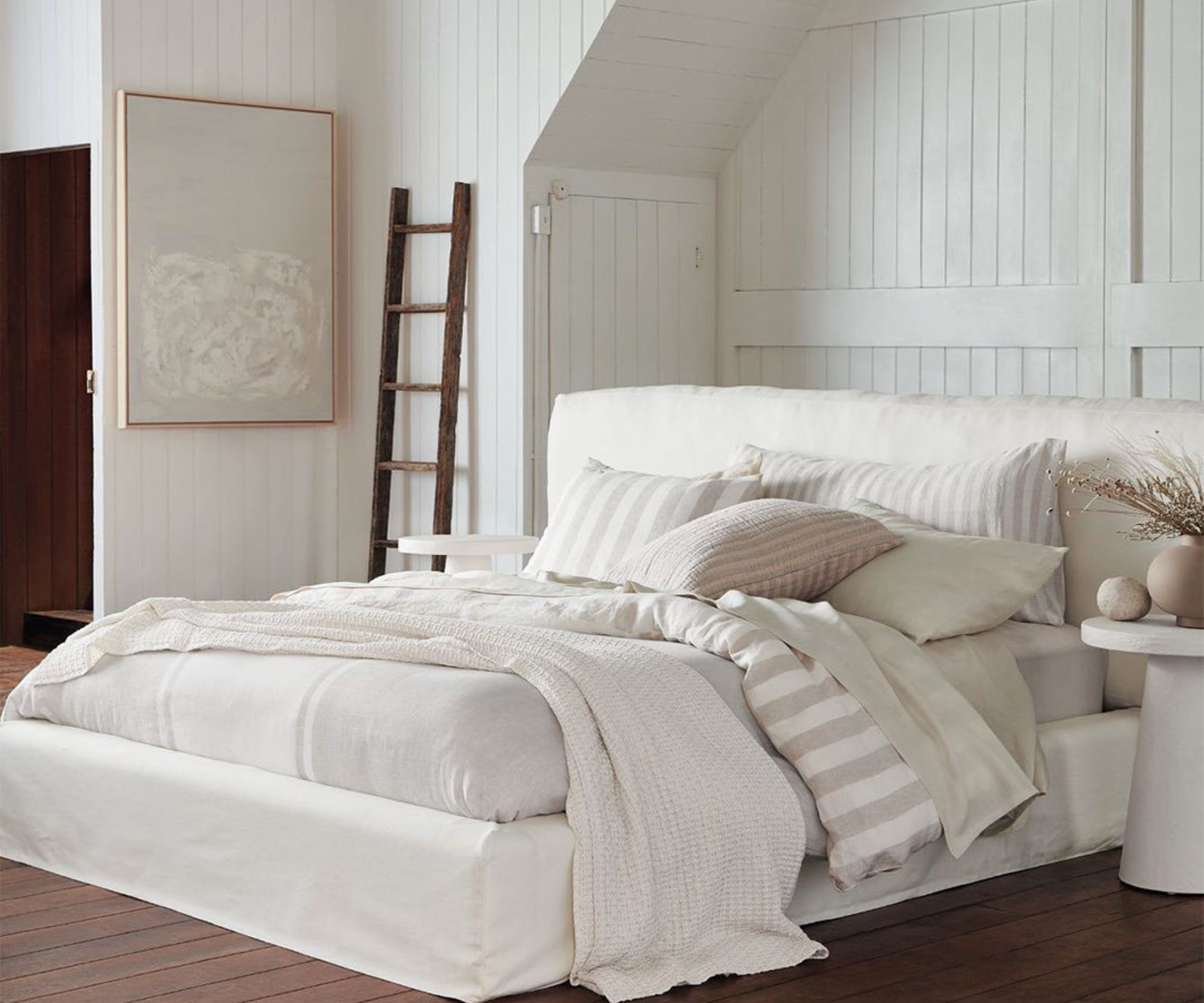
We have all been tempted to leave our bedsheets on just one more day before battling to change them, but it is essential to swap them out and wash bed sheets regularly to improve your sleep hygiene, stop your skin breaking out, and make a bedroom smell nicer.
'Regularly washing your bedding is key to avoiding sharing a bed with pesky dust mites,' warns Lucy Ackroyd, bedding expert at Christy. 'Although microscopic, dust mites can cause itchy skin and a dry cough, symptoms often confused with allergies.
'Although higher temperatures are more likely to kill dust mites, lower temperature washing is favored for environmental reasons, so around 40°C is the sweet spot to get a proper clean, yet still help cut down your household energy usage.
'Depending on the material of the bedding, there may be specific guidance around temperatures to wash your sheets at. For example, linen may differ to Egyptian cotton to waffle, make sure to always check the washing label for guidance,' Lucy explains.
25. Let your mattress breathe
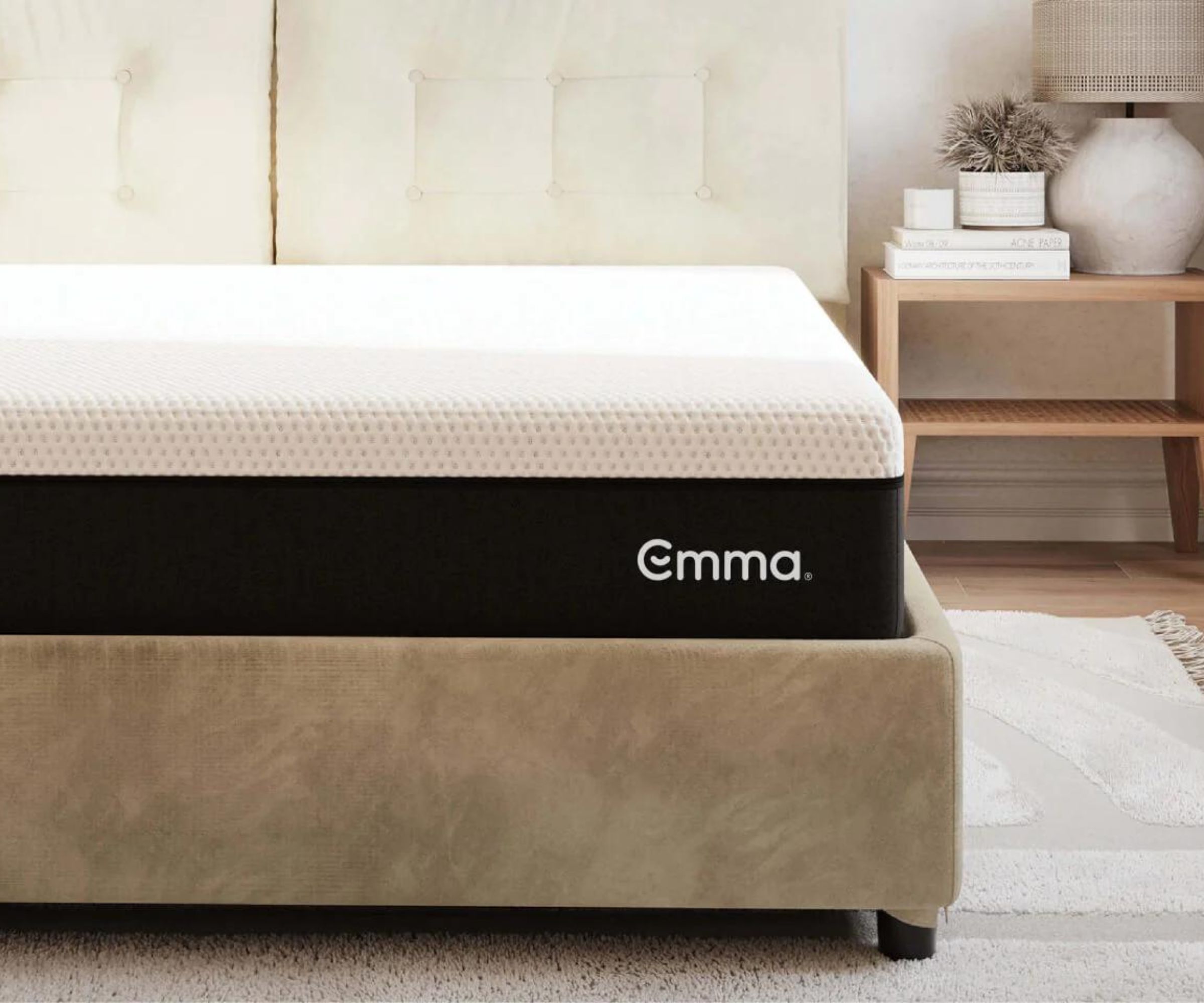
Before making your bed each morning, get into the habit of drawing the sheets off for 20 minutes or so. Airing out your mattress like this will stop stale smells permeating the surface, saving you from having to use strong, chemical solutions further down the line.
Even though it’s not part of your regular cleaning routine (every six months is a good guide), knowing how to clean a mattress the natural way is beneficial. Use the upholstery attachment on your vacuum to clean all sides, then spot clean stains individually. Bicarb of soda is a handy natural deodorizer – combine with a few drops of lavender essential oil and sprinkle over your mattress, leave for an hour, then vacuum it clear.
Turn your mattress every three months or so to prolong its life and keep it in comfortable condition.
26. don't neglect comforters and pillows
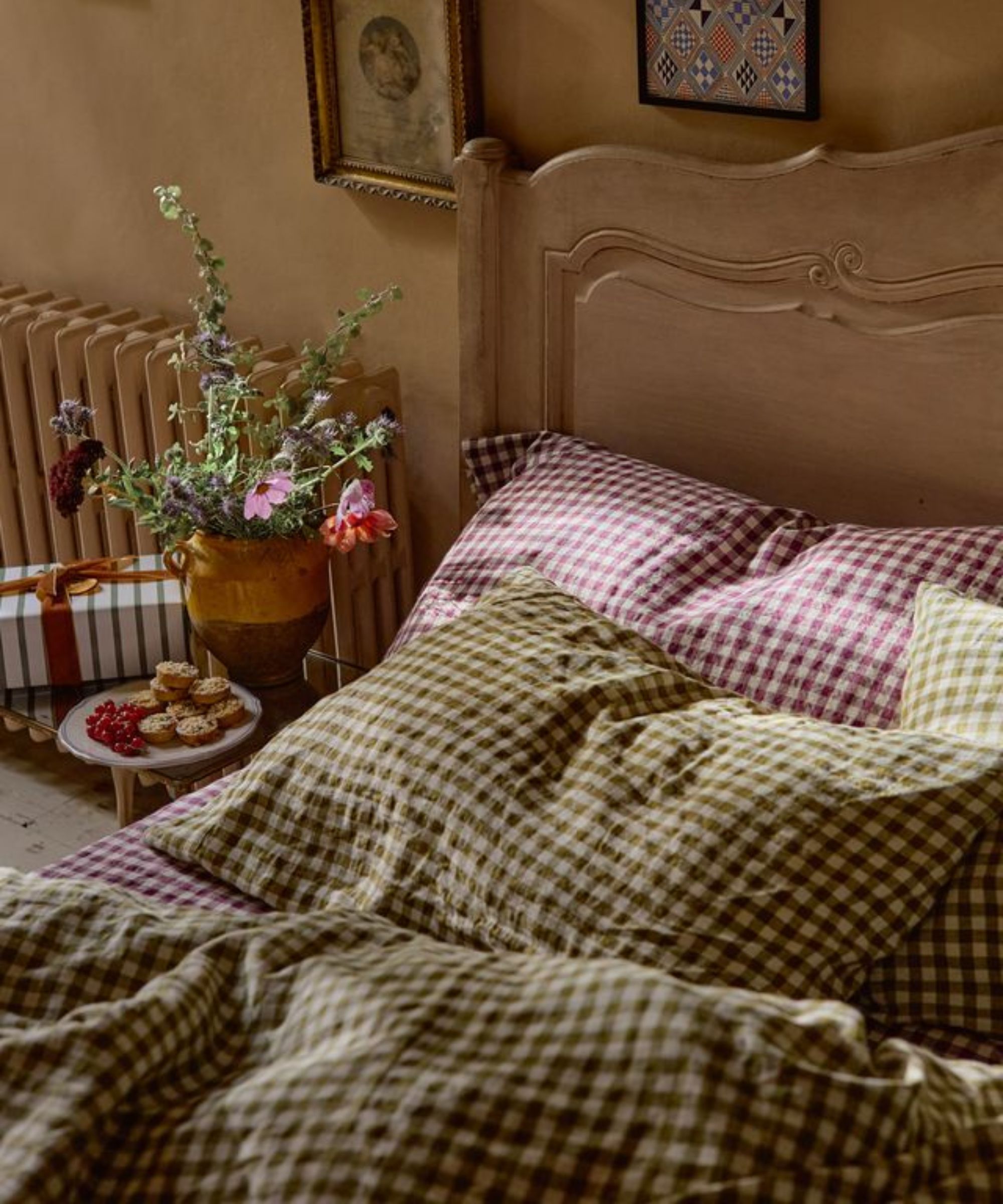
'In addition to washing your sheets, you should also be washing your comforter and wash pillows – ideally twice a year at a minimum,' continues bedding expert Lucy Ackroyd. 'If you choose to use a tumble dryer, there should be room for the duvet and pillows to move around in the machine freely and if there isn’t, or if your duvet is a high tog (13+) you’re better off taking it to a launderette or dry cleaners.
'Be sure to check the care label for instructions before proceeding to wash, as not all duvets and pillows are machine washable, and temperatures will differ for each.
'To keep your duvet fresh between washes, shake it every day before you make it and air it in direct sunlight once a month, as this helps to naturally disinfect it,' says Lucy.
27. Remember under the bed
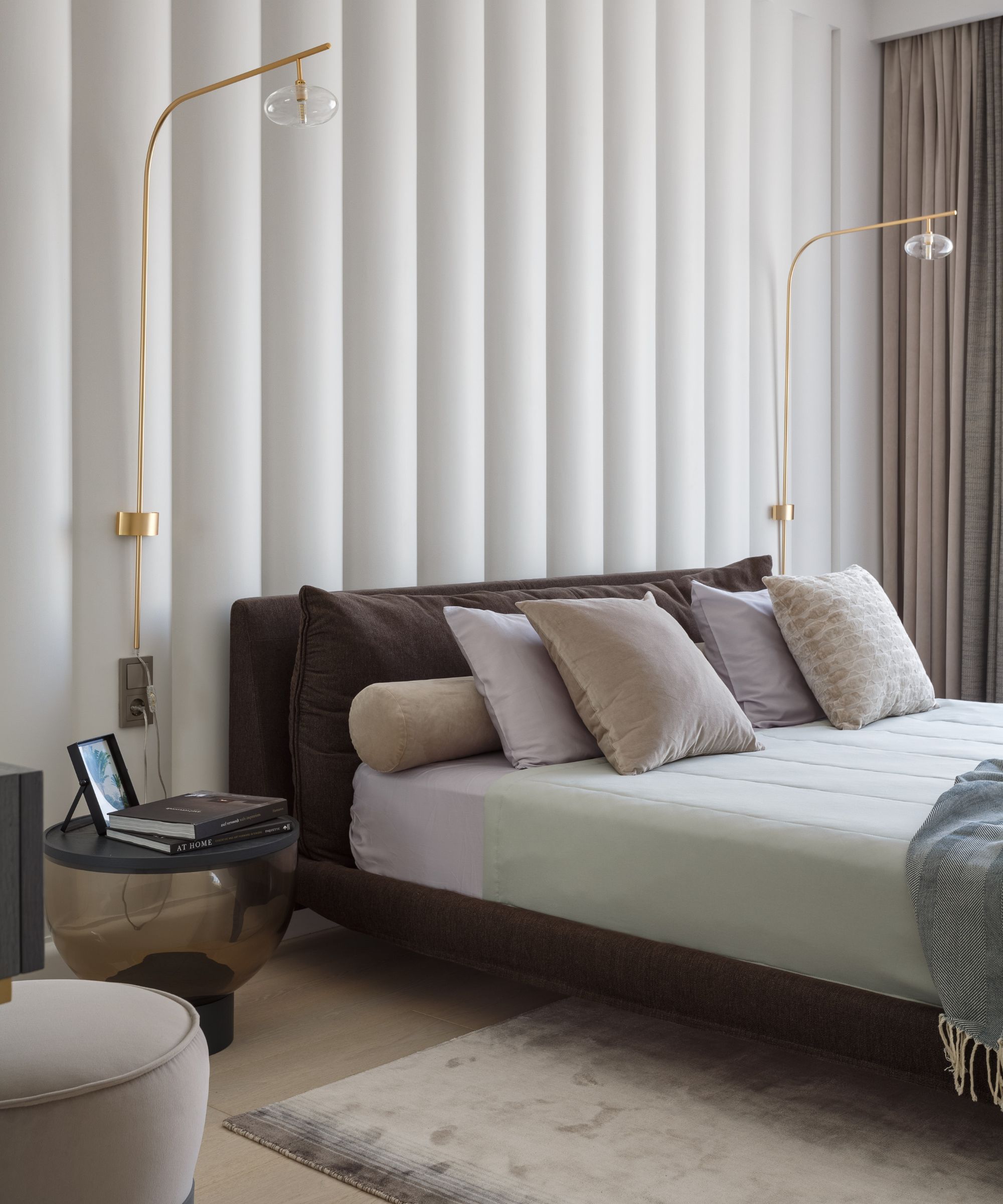
One spot you definitely aren't cleaning but need to is under the bed, cleaning experts advise. This area is a hotspot for dust, debris, and hair, and can contribute not only to worsening allergy symptoms but skin problems and musty bedroom smells too, they warn.
Try to remove any under-bed storage and vacuum beneath the bed regularly to prevent this. Aim for every few months at the very least to stay on top of build up.
28. Freshen up your clothes storage

You might only ever put clean clothes away in your closet and dresser, but these storage spots can be a lot dirtier than you think.
To clean a clothes closet, start by removing all of your garments (decluttering clothes as you do so). With everything out of the way, start at the top and dust the shelves, rail, and other storage nooks, remembering to wipe down the walls and doors too. Then, vacuum the base or floor to collect any fallen dust or debris. Then you can add your clothes back in.
To prevent musty odors, you can ad in a lavender sachet to closets and dressers, too.
Bathroom cleaning tips
29. Start with the shower

The best place to start when cleaning a bathroom is the shower. his way, you can put tough cleaning production place and leave them to sit to work their magic and minimize scrubbing, says Jen Stark, founder of homemaking blog, Happy DIY Home.
'Whether you’re using all-natural remedies or store-bought cleaners, you’re guaranteed a better result if you give them enough time to work. This will give the cleaning agents time to soften up and break down any stains while you get on with other cleaning tasks. When you get to them, they’ll be much easier and quicker to wipe away.'
30. Scrub the toilet
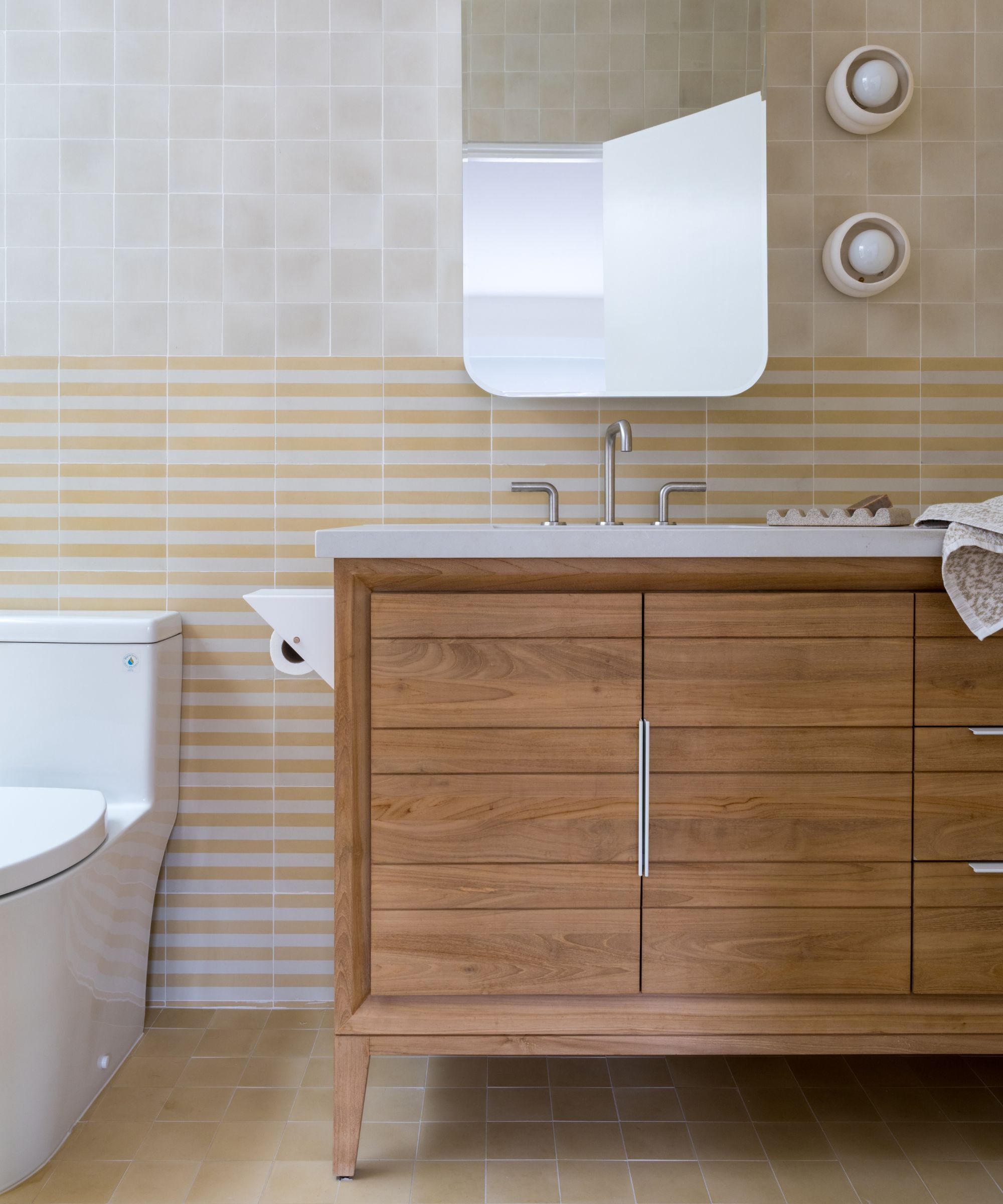
If you want to keep a toilet hygienically clean, bleach doesn’t have to always be the answer. Swap it out in favor of a few store-cupboard ingredients, instead. Pour a cup of white vinegar into the toilet, followed by two tablespoons of bicarbonate of soda. Let the combination fizz for a few minutes, then give the bowl a good scrub with a toilet brush, getting right up inside the rim. Flush to see gleaming results.
31. Rid grouting of grime
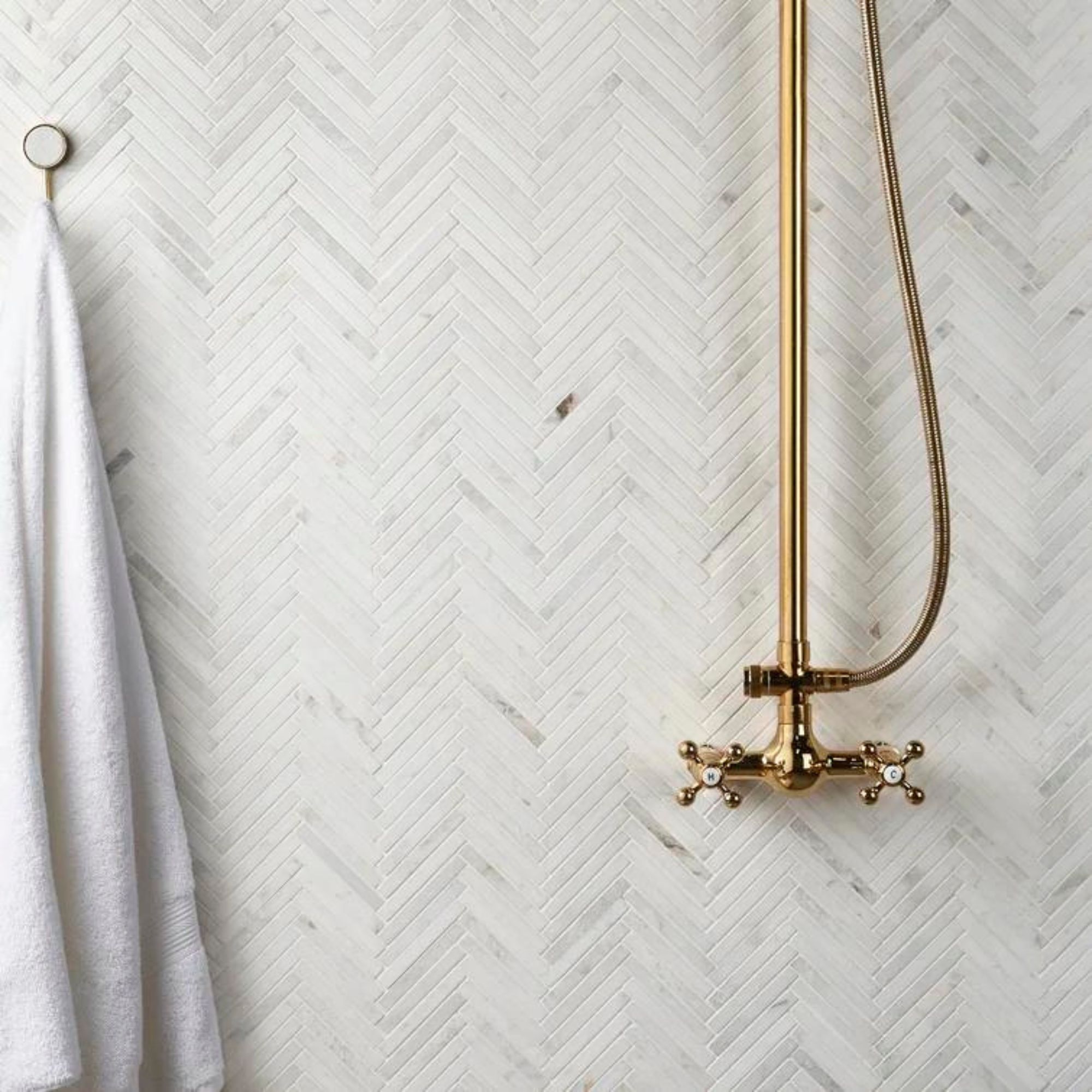
Stubborn black mold found in grouting and silicone can be quickly eliminated by scrubbing with a toothbrush dipped in bleach, but if it’s a more natural route you’re after, try using a magic eraser – a quick wipe should do the trick, but for any stubborn areas, scrub a paste made up of ½ cup of bicarb of soda and 2 cups of water into the grout, then buff until it’s clear of grime.
We have found that steam cleaners are one of the best ways to clean shower grout, too. This approach minimizes scrubbing while using high-powered steam to break down limescale and kill odor-causing bacteria. Switch to the squeegee head, and you can quickly swap over to cleaning shower glass at the same time.
32. Buff up tiles to a shine

There’s nothing like squeaky-clean tiles to give a bathroom that hotel-luxe feel. Mix up a solution of one part white vinegar to two parts cold water in a spray bottle, then spritz over your tiles. Leave to work for 30 seconds before wiping with a damp cloth.
33. Be aware of your bath mat
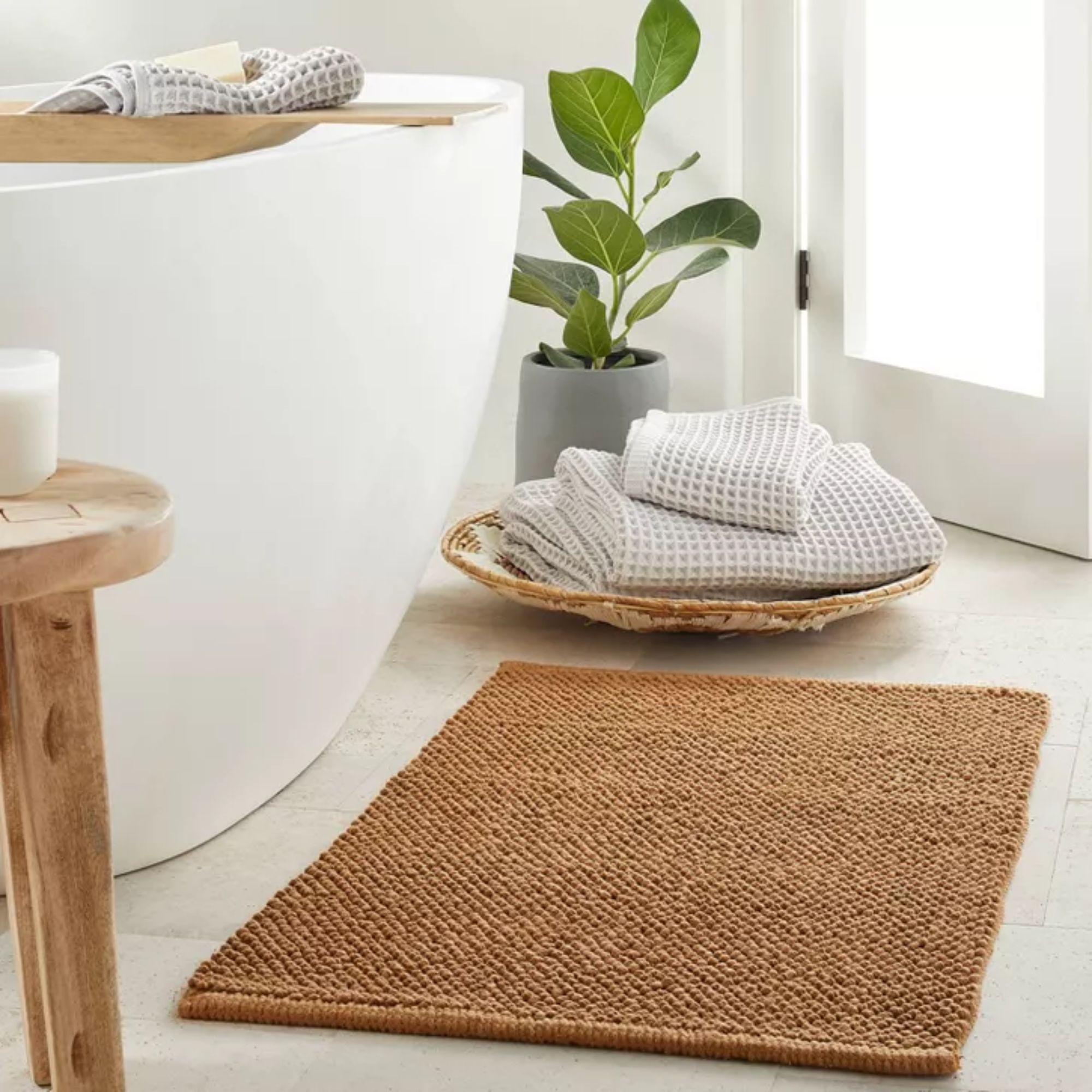
One of the things in your bathroom you might be forgetting to clean is your bath mat. Just like towels, they spend a good deal of time damp, which makes them a breeding ground for bacteria. Shake out to remove any dust or hair, and wash on a hot cycle at least once a week to keep it hygienic.
You could clean your shower curtain, too, whilst you’re at it.
34. Finish with the sink
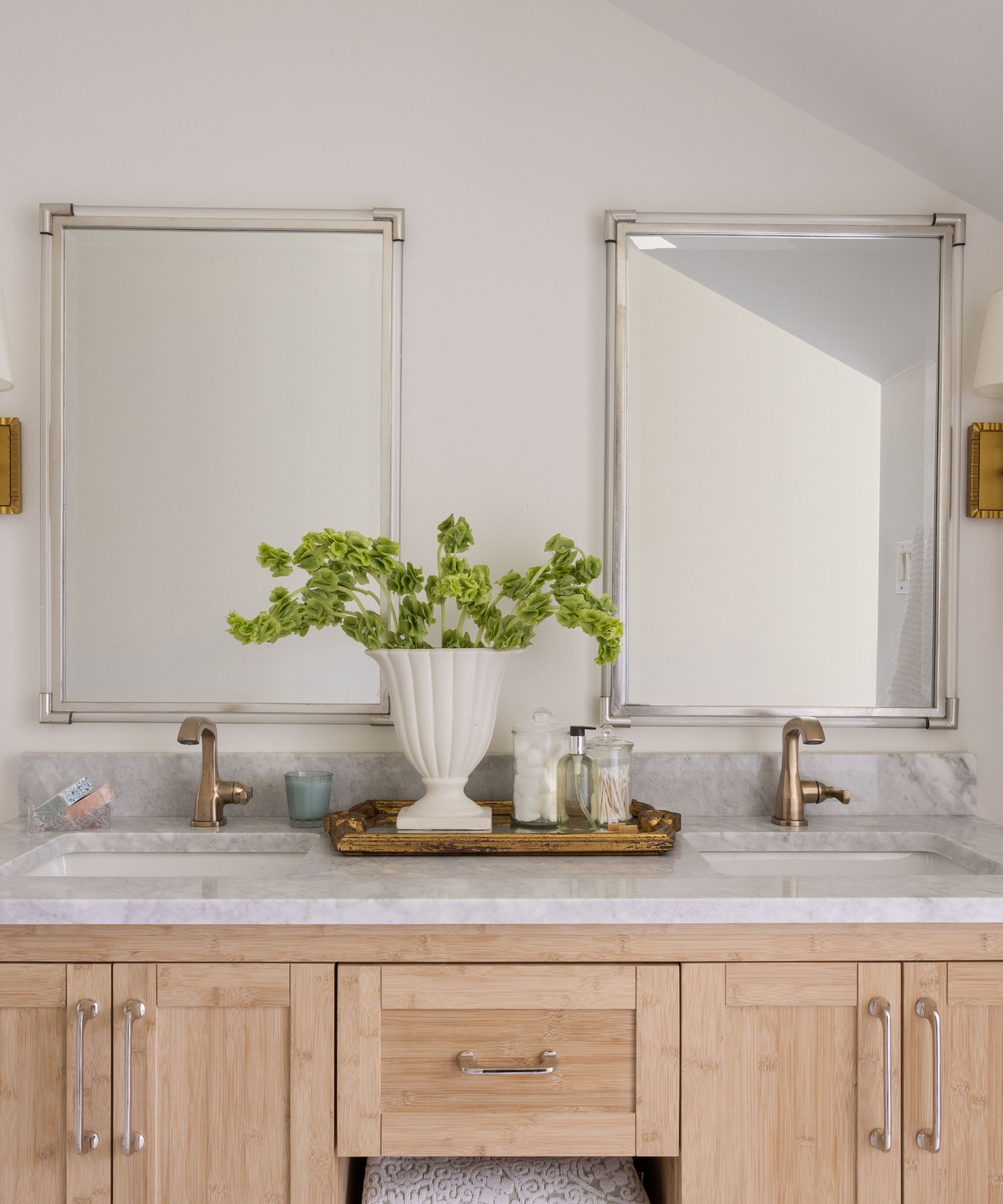
Finishing cleaning a bathroom by cleaning a bathroom sink allows you to use the sink to clean off any tools or clean cloths as you work around the room without getting diret on your freshly polished porcelain,
Just as you clean the toilet, you can use a baking soda paste to buff the sink to remove limescale and hard water marks.
35. Clear out drains
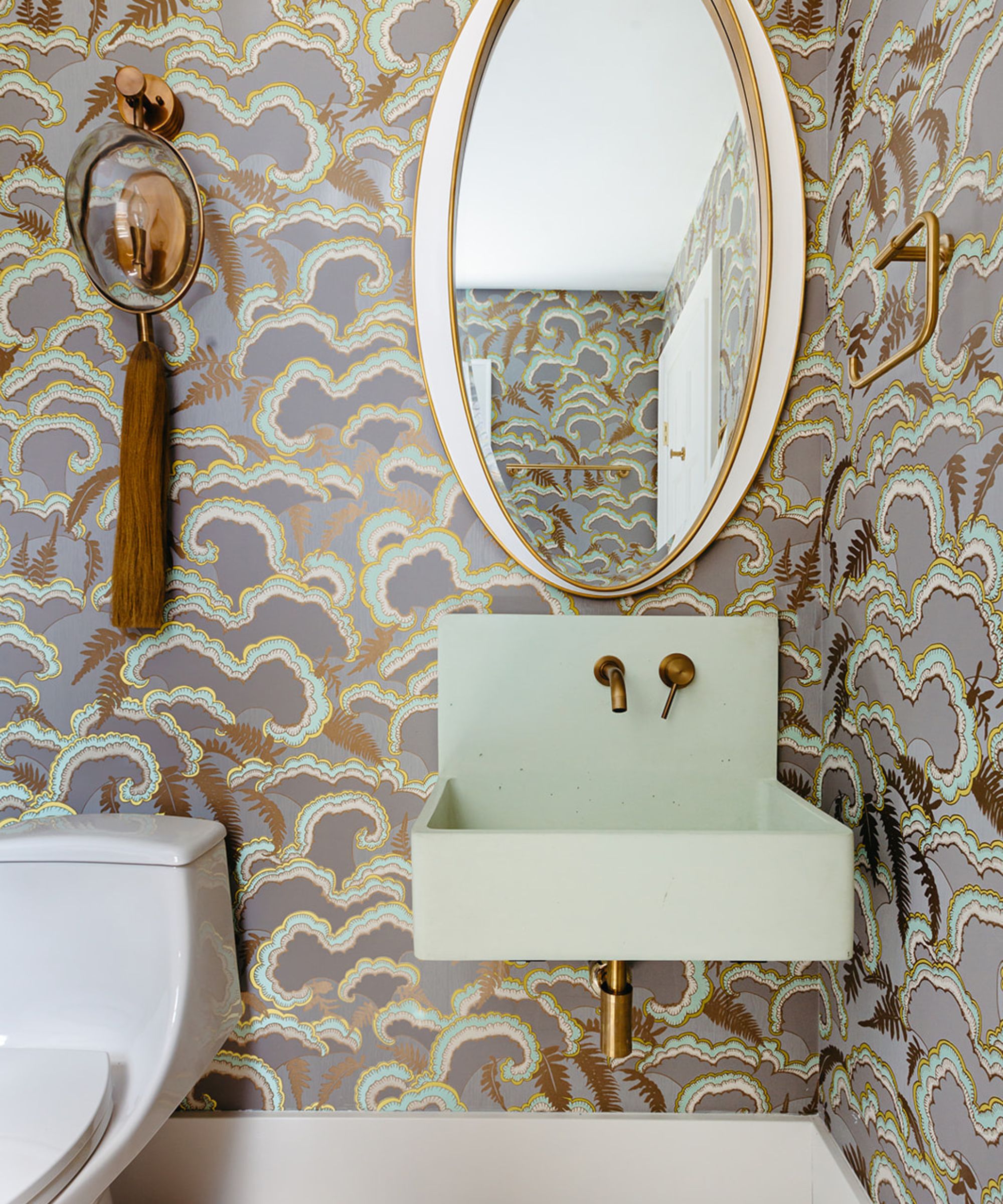
The final step in cleaning a bathroom is to clean and deodorize drains. While you can use natural methods for this step, it is often more effective and safer to use commercial products designed for breaking down hair without damaging pipes. There are several available at home wear stores for different needs, such as deodorizing, removing hair, or breaking down grease and mold.
Window cleaning tips
36. Buff away smears
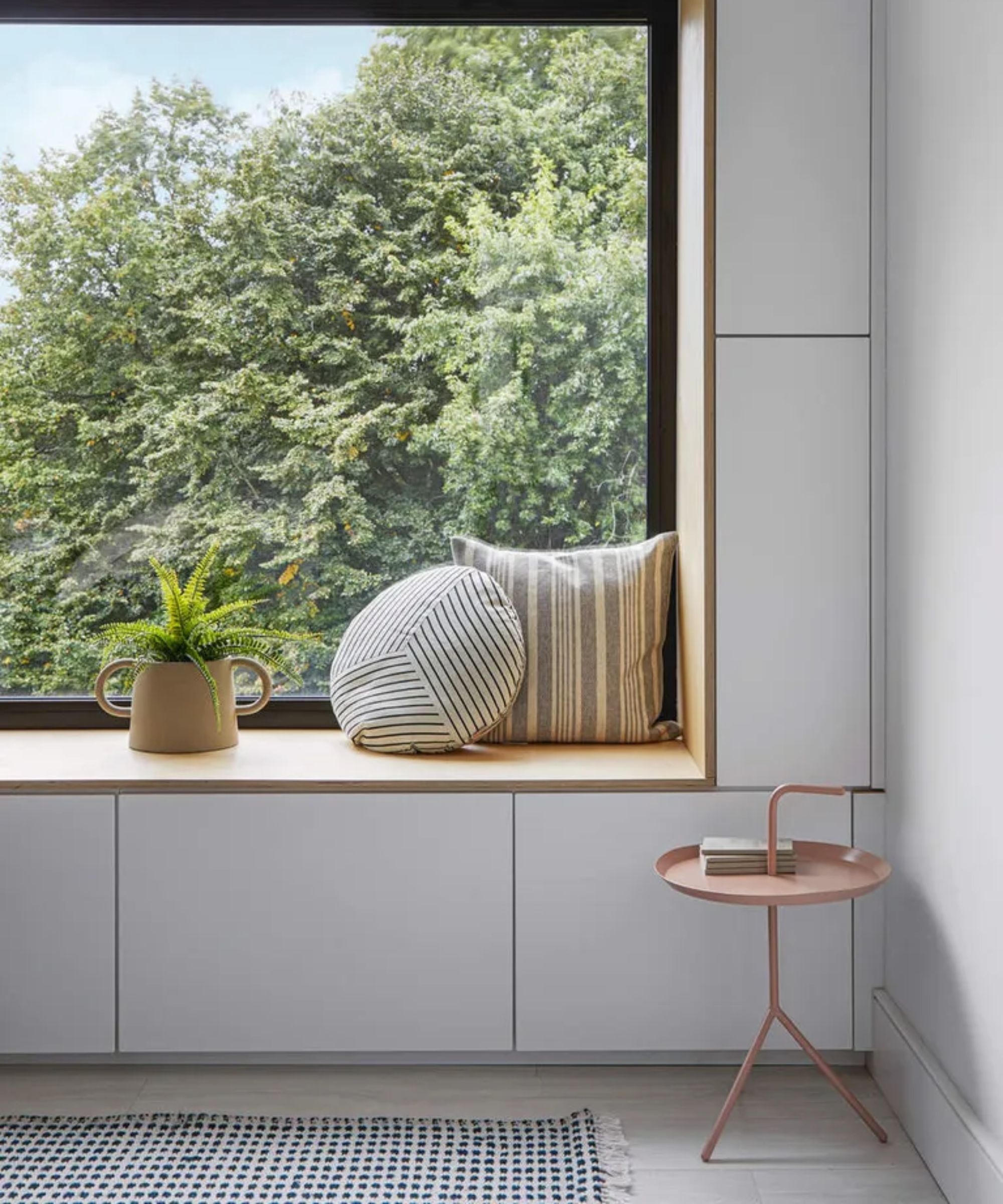
To clean windows without streaks, be sure to avoid the task on a hot day – they’ll dry too fast and leave streaks otherwise. Before you start on the panes, give the frames a good dust down using a soft, dry cloth.
You can use a solvent-free glass cleaner, but a spray bottle with warm water and a drop of washing liquid (swirled in gently to avoid suds) works just as well. Add a splash of white vinegar to help cut through the grime. Spray onto the glass panes using a microfibre cloth and wipe dry, or use a double-sided squeegee for the outside.
This solution will work on any glass surface in the home, from picture frames and coasters to the glass panels in your wood-burning stove, and is also the recommended method for cleaning a mirror without streaks, as well. ‘If you’d rather not use vinegar, try adding distilled water in the mix to achieve a streak-free finish’, recommends Marilee Nelson, co-founder of Branch Basics.
A good hack is to wipe horizontally indoors and vertically outside, or vice versa, so you know which side any smears are on. If you spot any, try using newspaper to wipe them away – the paper and ink act as a light abrasive.
37. Use The Pink Stuff on outdoor grime
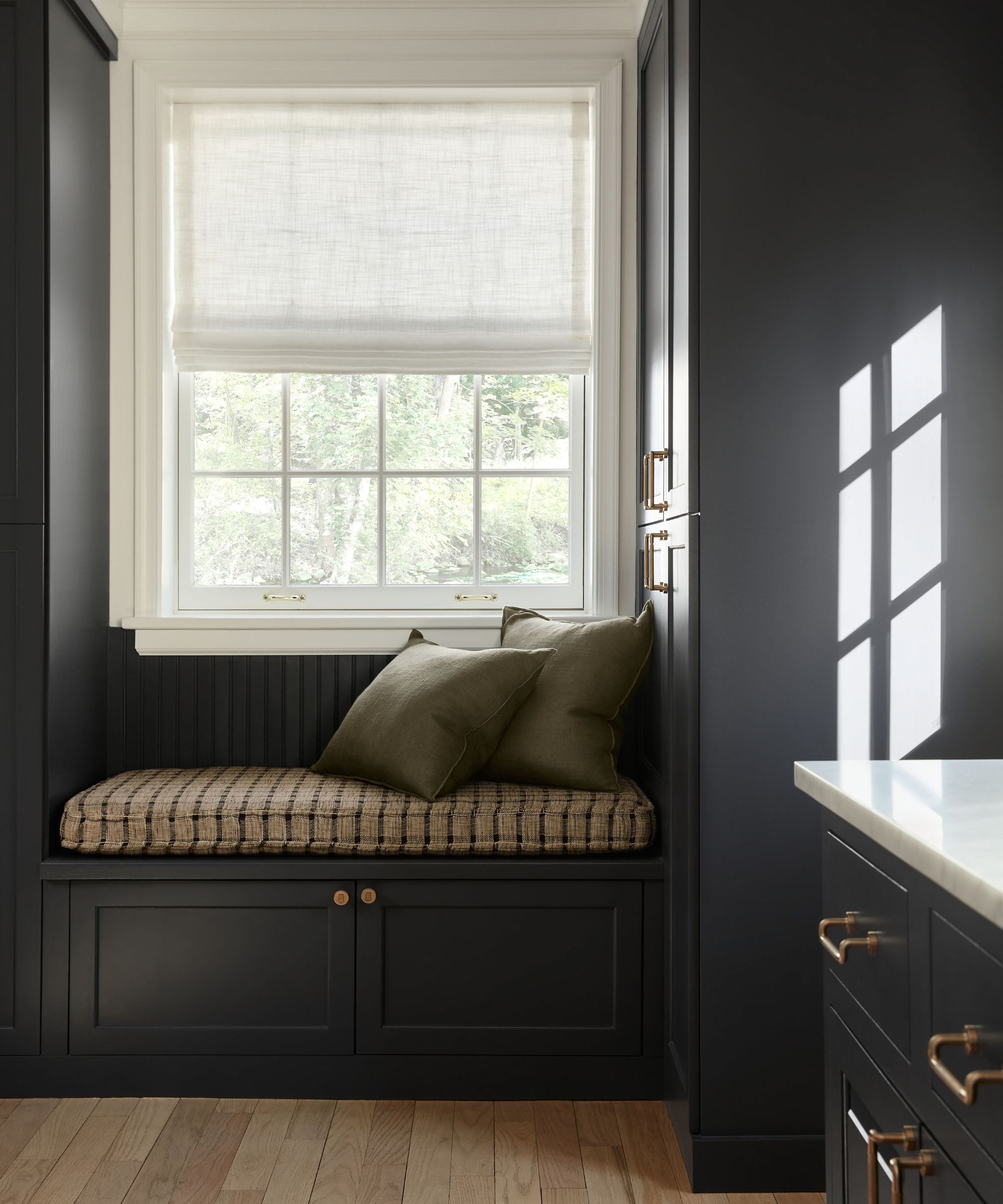
There are several things you can clean with The Pink Stuff, but windows are one of our favorites (I call it my 'Pink & Blink' window cleaning hack).
I start by wetting the window with warm water, before scooping up a good amount of Pink Stuff Cleaning paste, from Walmart, on a Scrub Daddy Scrubber, also from Walmart, dampened with hot water to make it soft.
Th, I work in small, circular motions to melt the grease and dust away from the exterior of the window.
Finish up by rinsing the paste away and buffing the glass dry with a clean towel for a spotless shine.
38. Steam windows treatments

Struggling to keep slatted blinds and shutters dust-free? We’ve got a handy hack to solve the problem. Wrap a pair of tongs with a microfiber cleaning cloth and secure it in place with rubber bands. Spritz with household cleaner before grabbing a slat and swiping right the way across. The same technique can be achieved by putting old socks on your hands, something to bear in mind when organizing a sock drawer!
If you’re after a deeper clean, restore plastic and metal blinds with a mixture of warm water, white vinegar and a few drops of washing up liquid; wood blinds with furniture polish and fabric blinds with the vacuum.
‘The one cleaning treatment that’s safe for virtually every window treatment, from blinds to curtains, is the humble vacuum – just pop an upholstery or brush attachment onto the end and you’re ready to go’, says Julia Dorn, executive director for Graber.
When cleaning curtains, opt for steaming to avoid having to take them down and risk them getting crumpled or stained.
39. Polish window sills
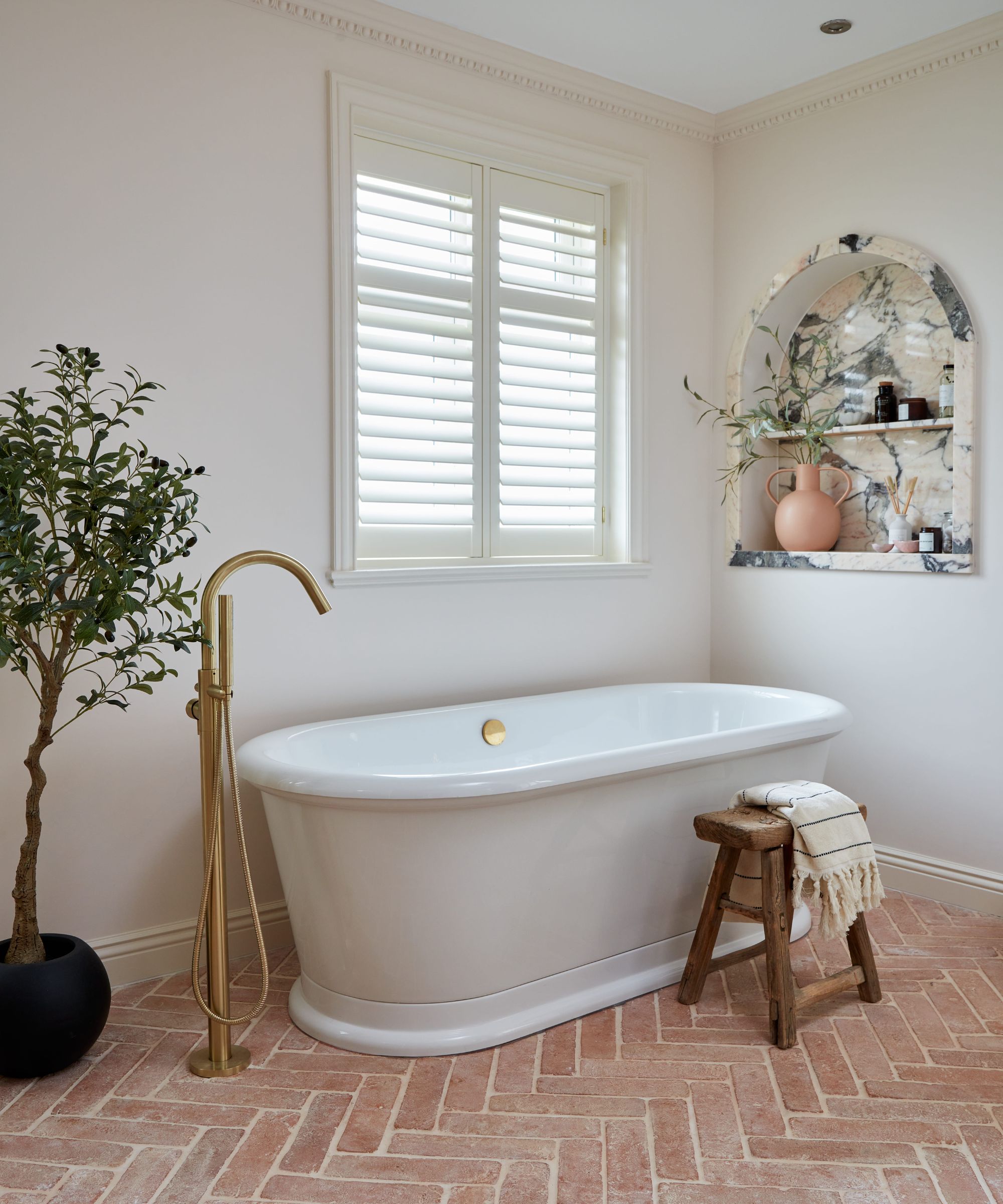
If a room is feeling dark and dingy, let the light in. It sounds obvious, but you’d be surprised how clearing even just a few things off a windowsill can make all the difference to the levels of sunlight that stream into your home. It’ll make cleaning feel more worthwhile, too, if you can actually see the results! On that note, be sure to wipe down the sills regularly to keep them looking neat.
Next, learn how to banish chore procrastination so you can get on with the jobs you need without cleaning making you feel overwhelmed.







